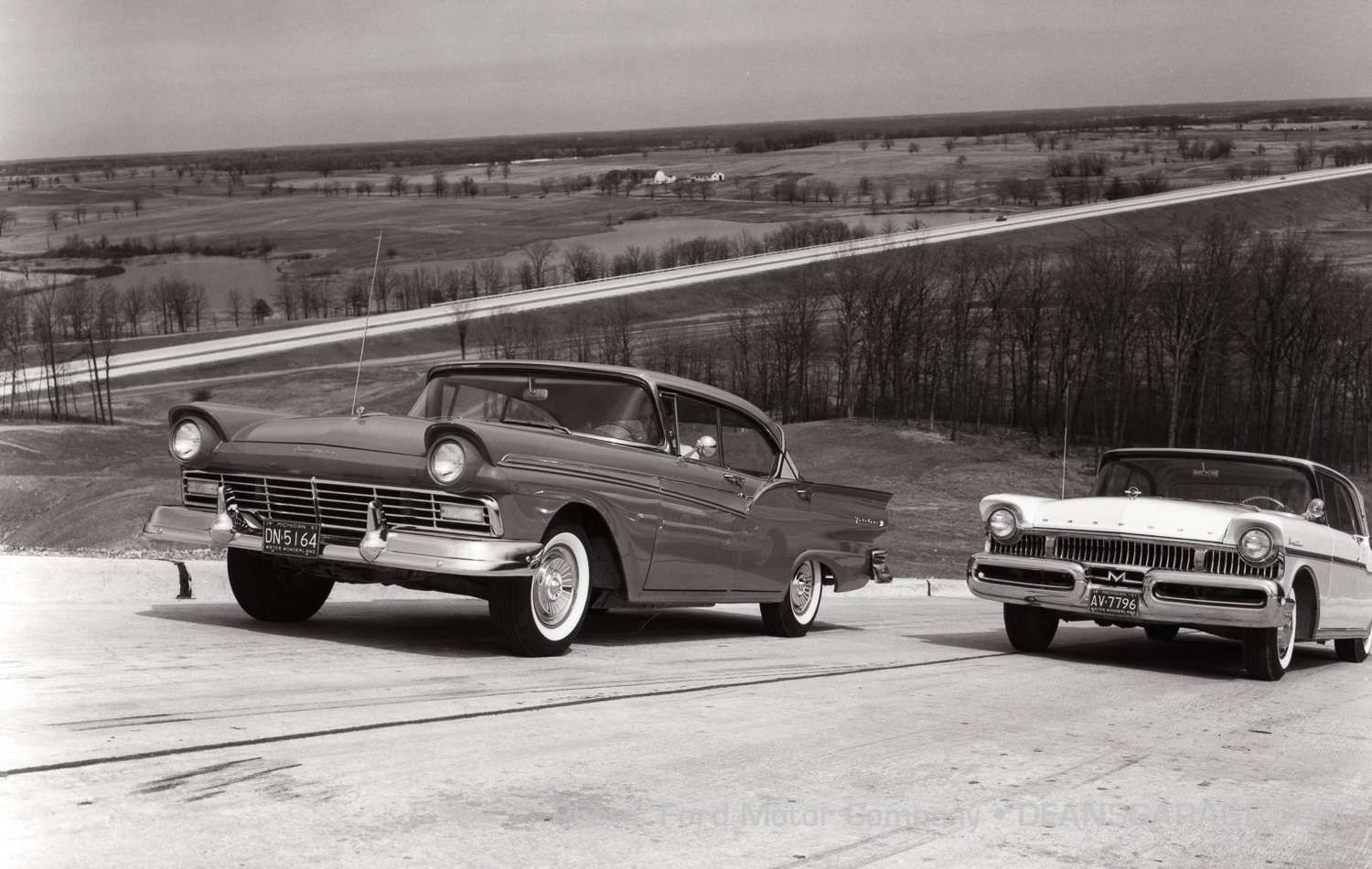
Ford’s Romeo Proving Grounds
By Todd Duhnke
In two previous Dean’s Garage postings, we reviewed Ford’s Dearborn Proving Ground, now named The Dearborn Development Center, and the Arizona Proving Ground outside of Kingman, Arizona. In this posting we will review the early years of Ford’s third major test track, the Michigan Proving Ground, which Ford developed north of Detroit and just northwest of the township of Romeo, Michigan.
While the Dearborn facility was sufficient for many years, an expanding product line and a need for more long-term durability testing required longer tracks and larger facilities. With that, in 1955 Ford bought some 3900 acres of land in Macomb County which was about 35 miles due north of downtown Detroit. This was a year after Ford had started to acquire land from the Air Force for the Arizona Proving Ground.
The land had an interesting history as the seller was Edward Fisher of Body by Fisher fame. The General Motors body building division. He bought the land in 1928 as a retreat away from the city and built a huge mansion on the site. He also raised prized Hereford cattle on the land, some selling for as much as $85,000,..in 1950’s dollars! He called it Hi Point Farm as it was on the highest point of land in all southeast Michigan. Also known as Twombly Mountain. His wife hated it as she preferred city life to the country. And back then, it was way out in the country. So as to keep peace in the family he sold the land, barns and mansion to Ford.
Photos courtesy of Ford Motor Company and The Henry Ford.
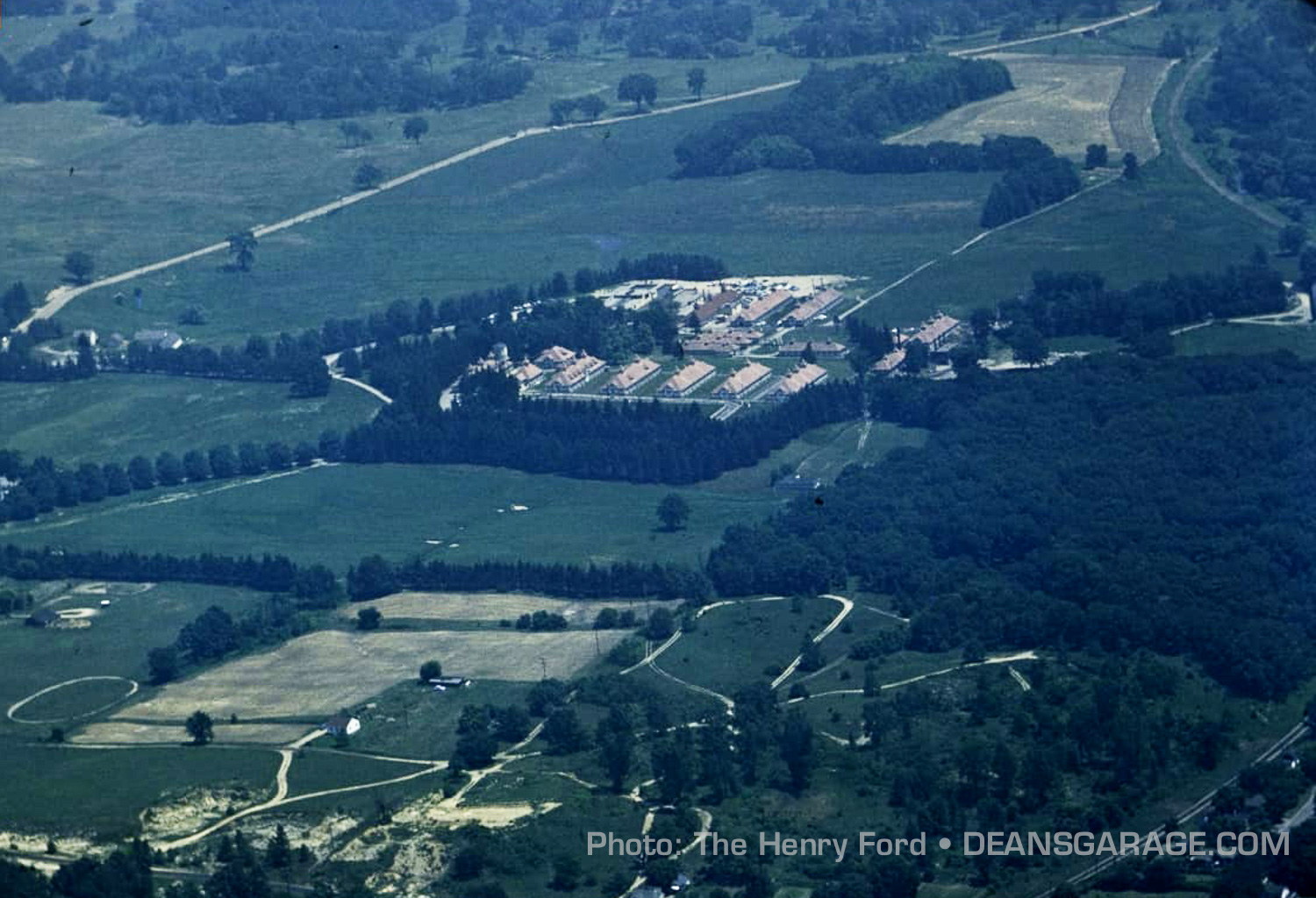
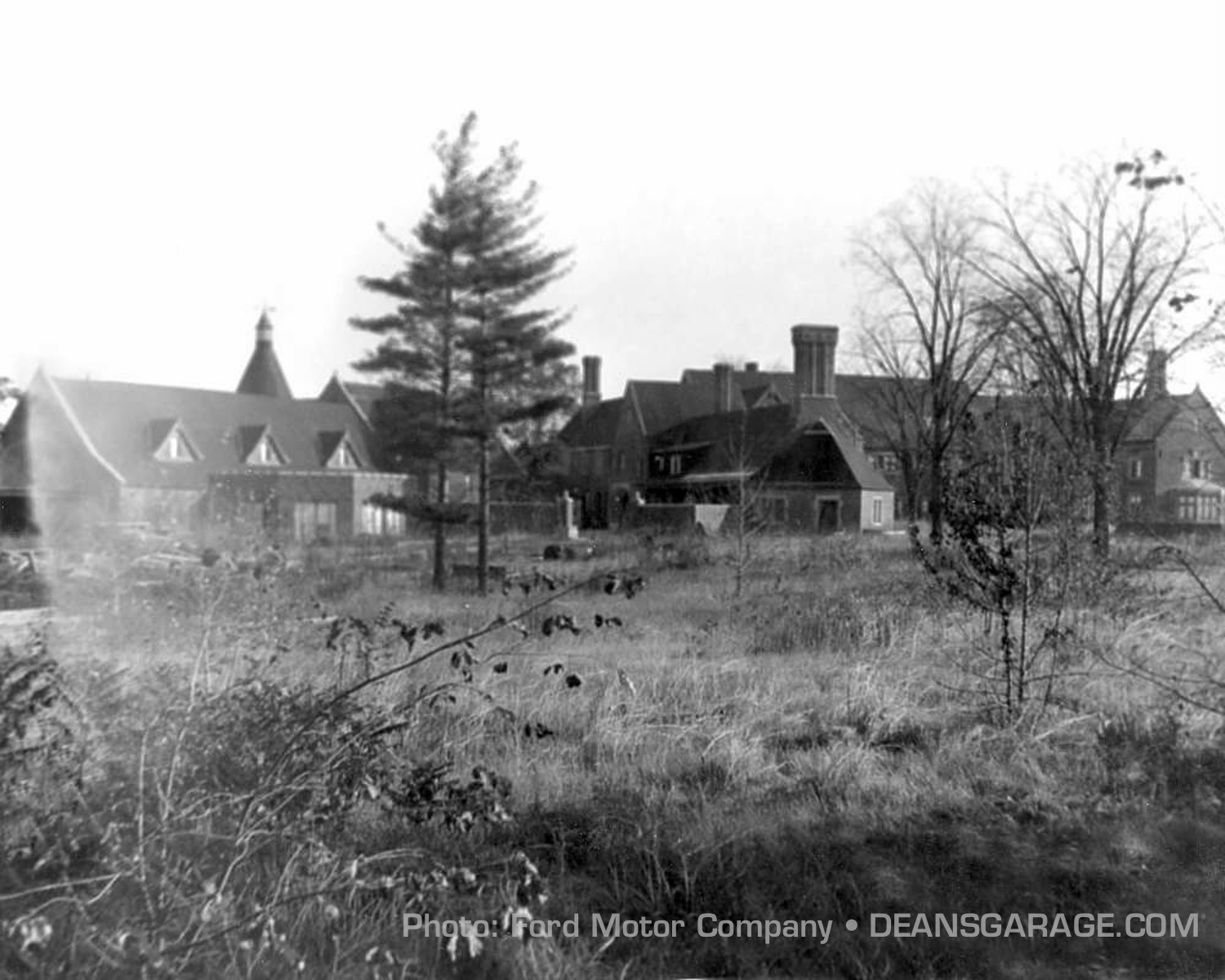
In the two above photos we can view both High Point Farms shortly after Ford acquired the property, and this hazy shot of the Fisher mansion. Construction began on April 1, 1955, on 3,880 acres of the ex-Fisher land.
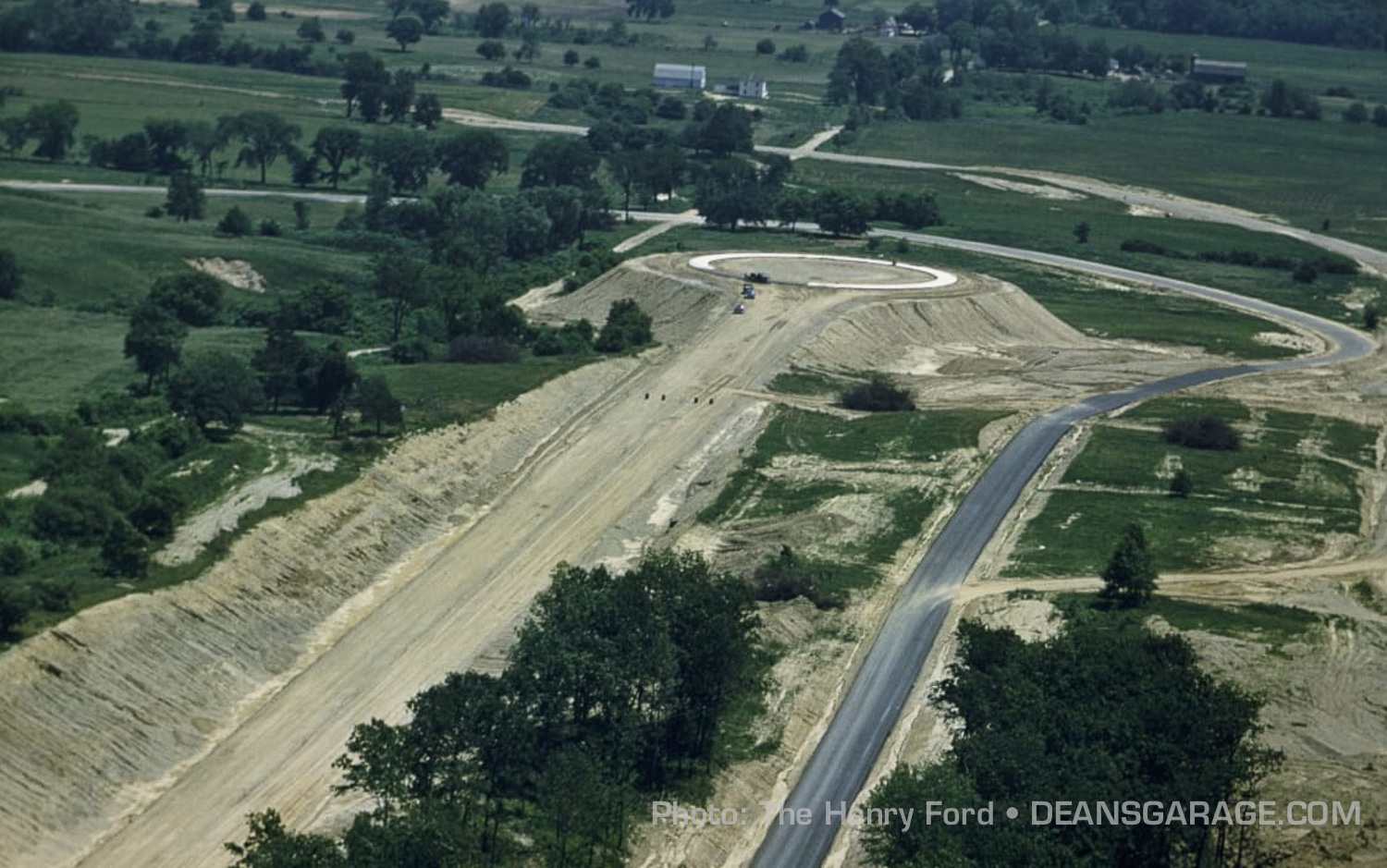
Here the straightaway turnaround is being constructed in the summer of ’55.
Constructed were a five-mile-long concrete high-speed test track with 60-degree high banking at the ends, an 8.1 mile rough gravel durability road with a few 9% grades, a two and a half mile long straightaway and a 7.2 mile long paved durability route that had numerous bumps, uneven pavement, purposely made potholes and every other conceivable road hazard. In all, over 100 miles of test track were built. By Christmas of 1956 most of the construction was complete.
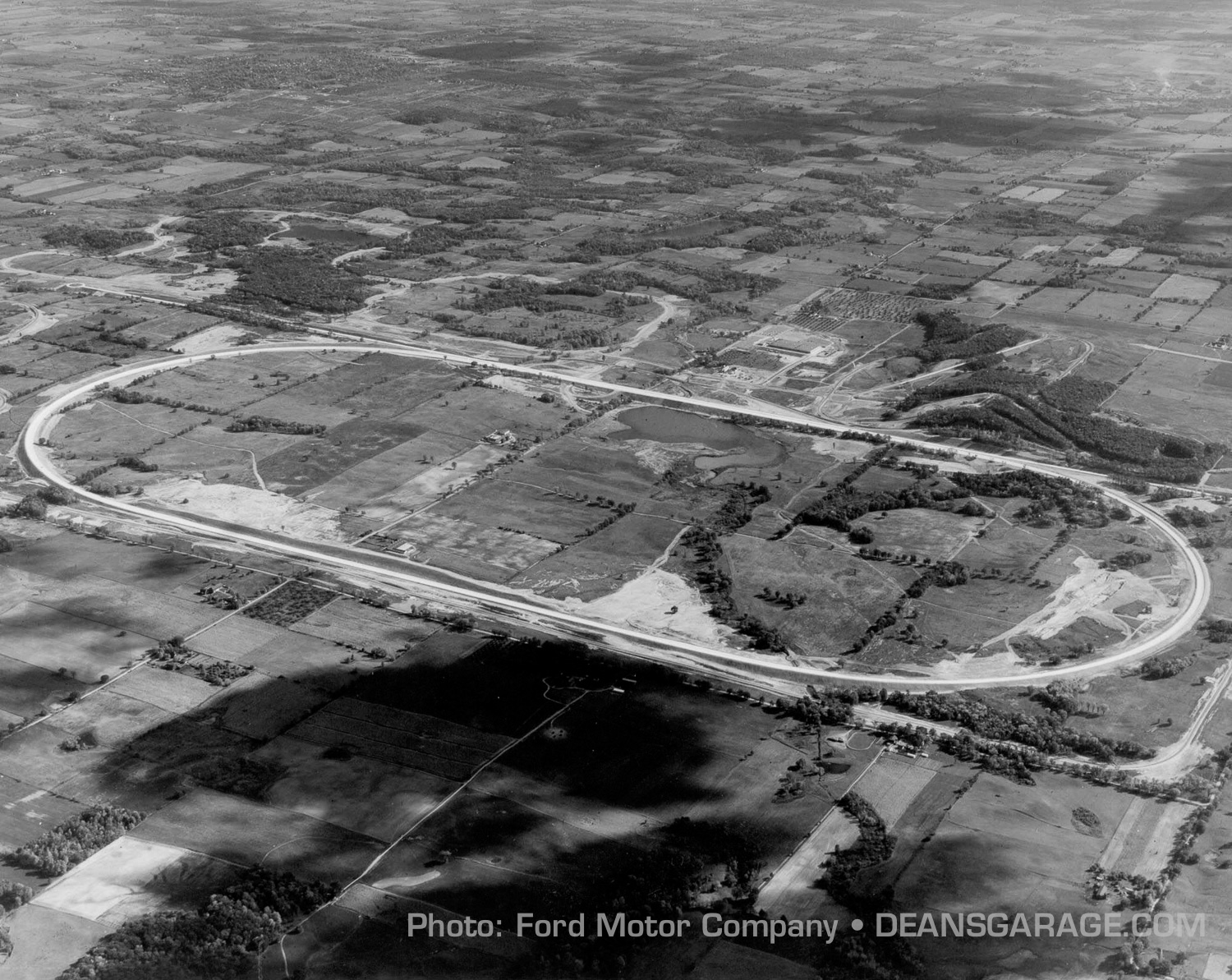
The facility was formally named the Michigan Proving Ground but has always been known to her intimates simply as Romeo. Romeo was officially dedicated on May 19, 1957, even though parts of the facility had been in use since mid-1956. This picture was taken in 1957.
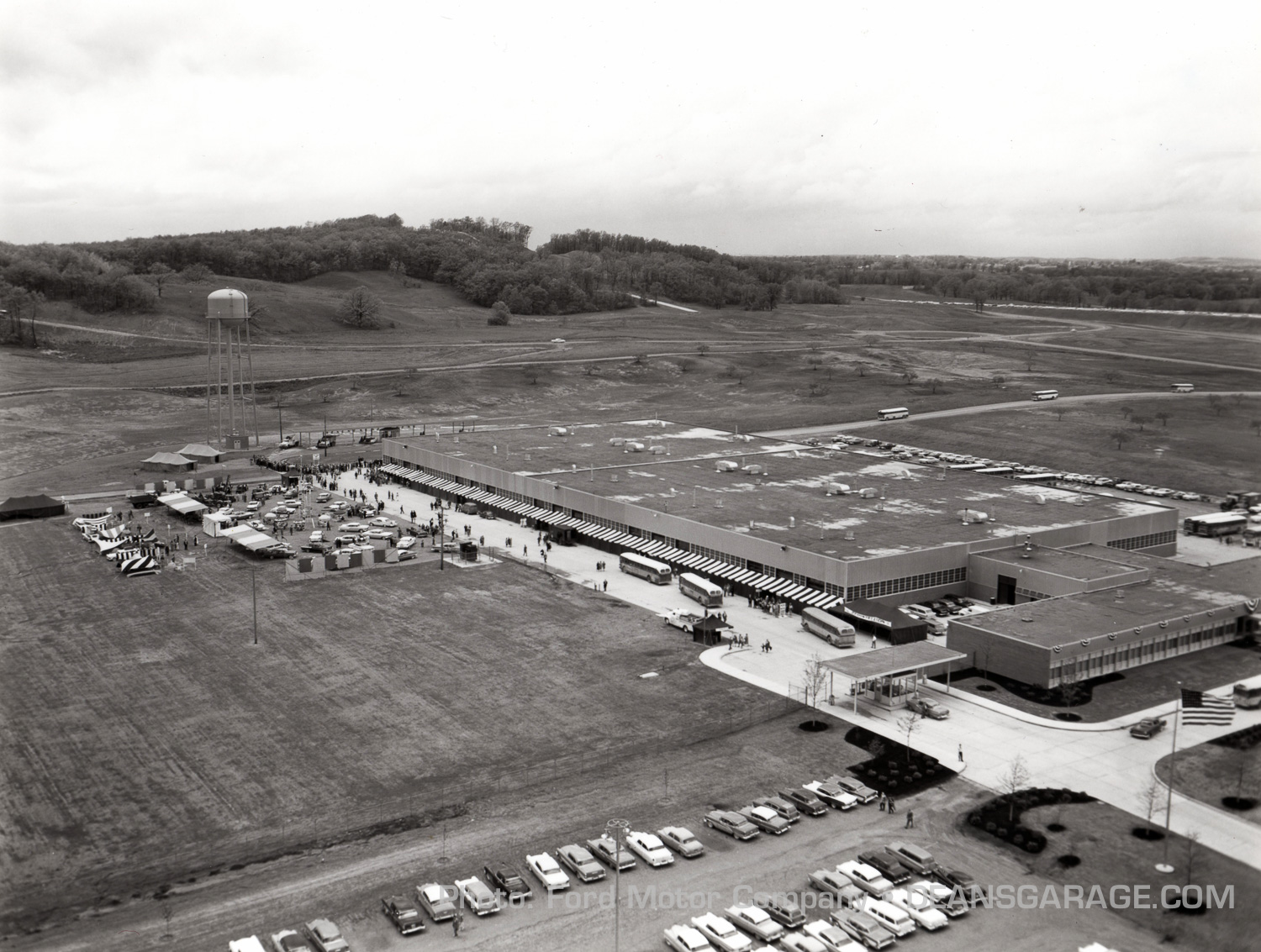
In addition to all the tracks, a large engineering and office building was completed to store, service, repair, modify and document the cars being tested. This picture and the next one were taken for the first public Ford Shareholder’s Meeting in 1956. You will remember that Ford had been privately held by the Ford Family from early on until January 17, 1956 when Henry Ford II took the company public.
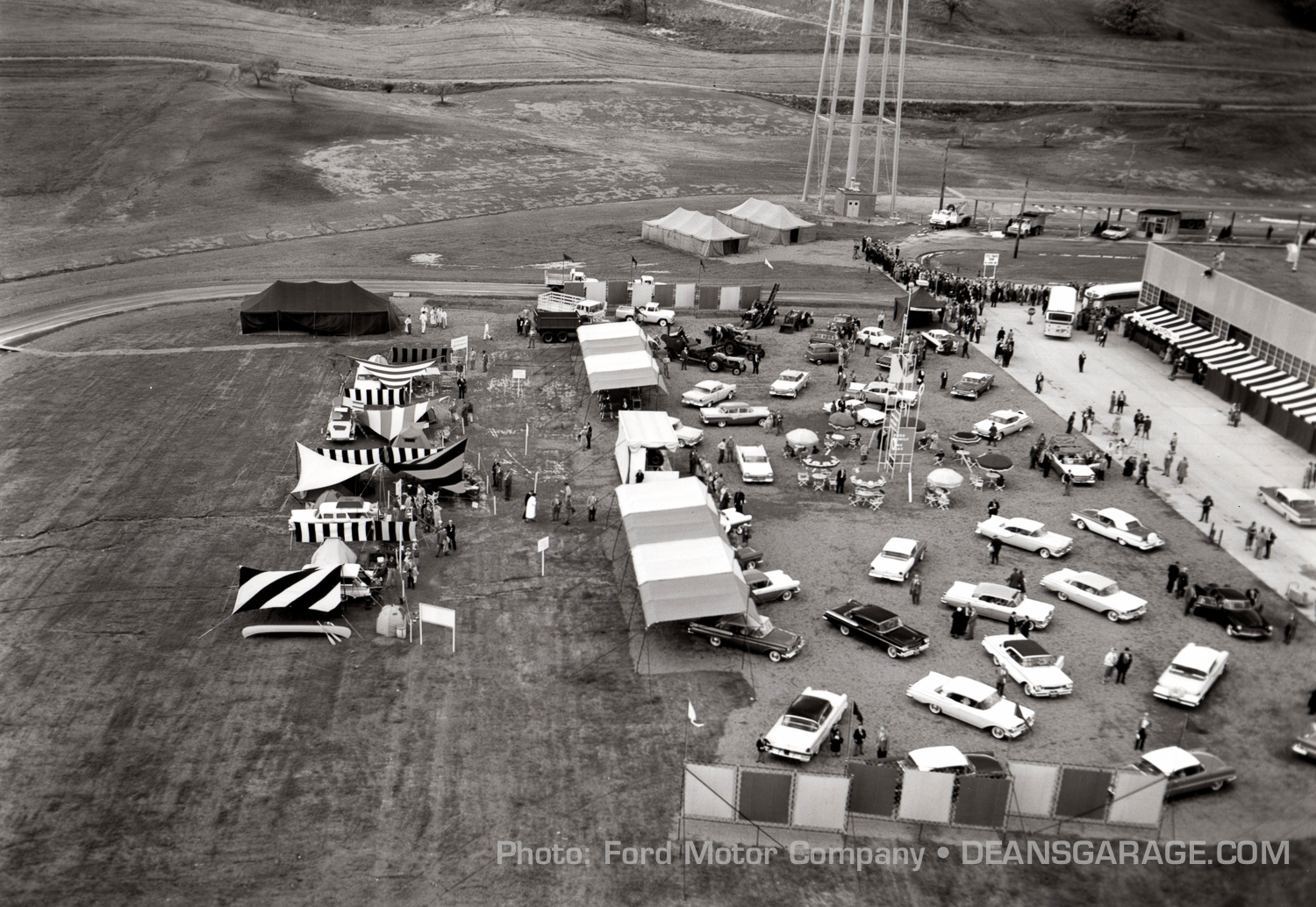
You will note that Ford has all the soon to be introduced new 1957 Ford, Lincoln and Mercury cars on display in addition to trucks and tractors. On the left side of the photo, you will see several tents with station wagons parked nearby. Throughout the 1950’s Ford pushed a marketing effort called, “Station Wagon Living.” It was to promote enjoying the great outdoors with a new Ford or Mercury wagon. Also note the row of gas pumps next to the base of the water tower.
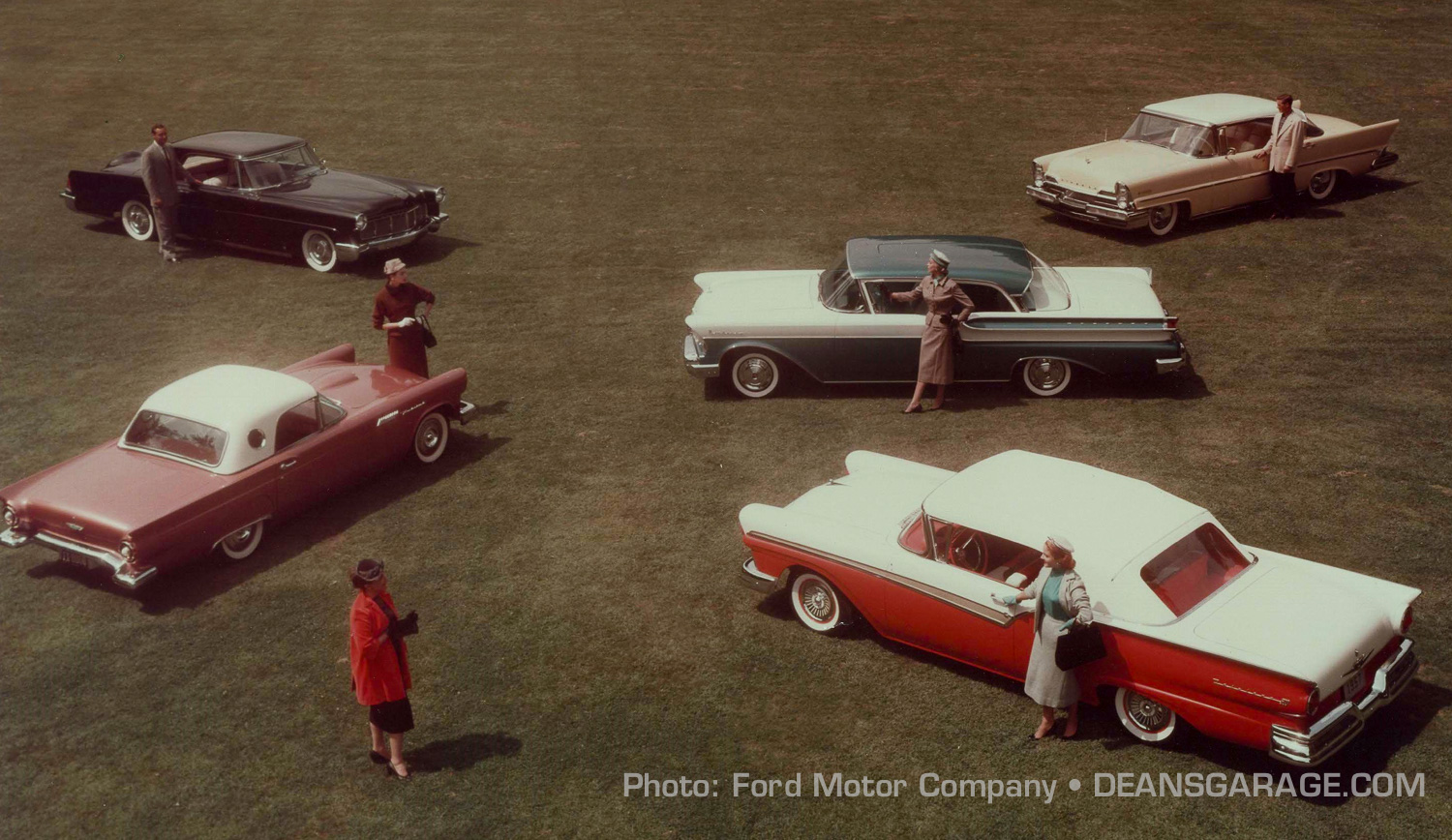
This grouping of the entire Ford Motor Company lineup was taken for the first shareholders meeting’s brochure.
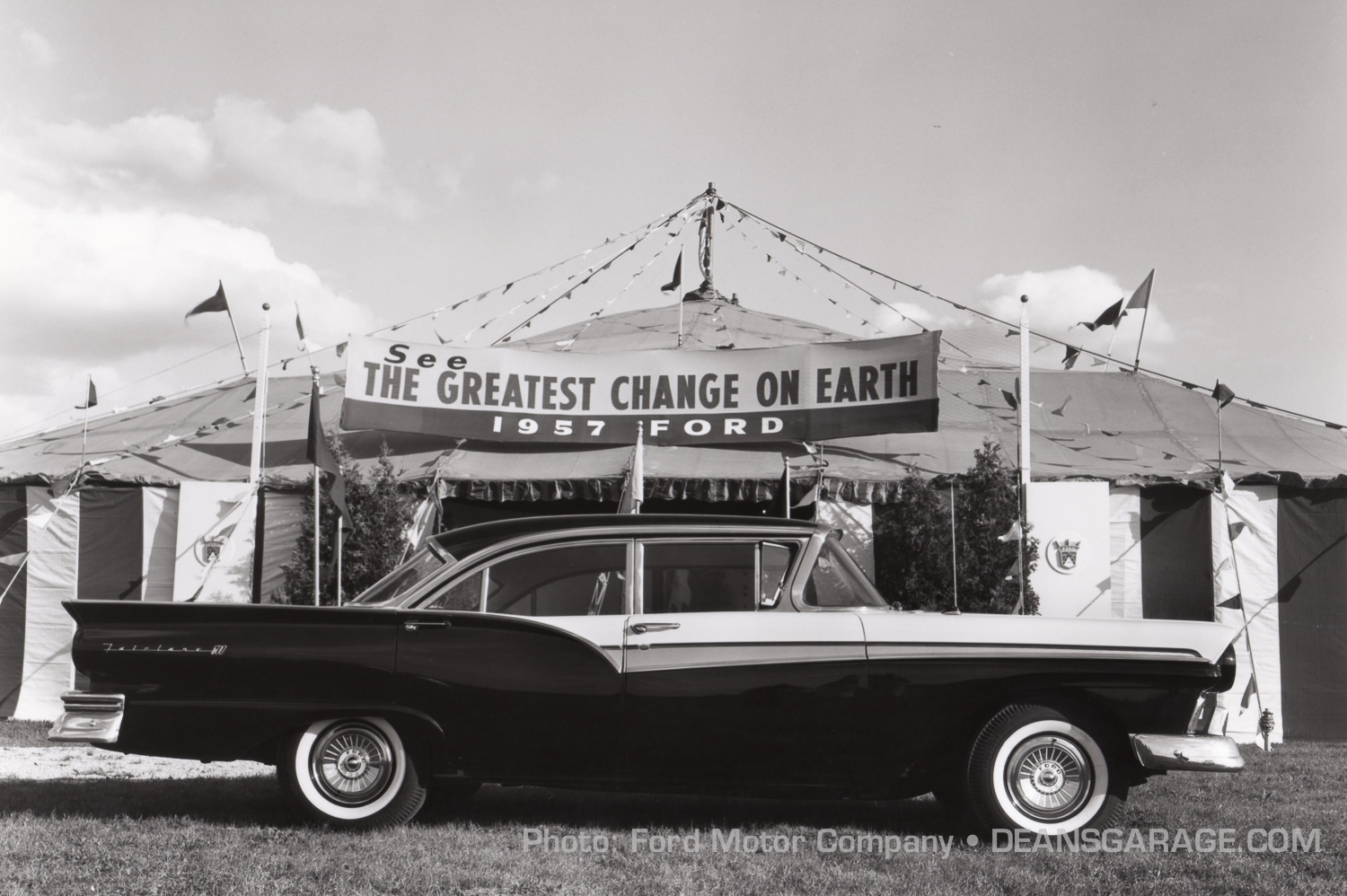
Ford also used the Romeo facility to quietly introduce to the press, and their long lead times, the very new for 1957 Fords. Ford erected large tents with numerous displays comparing the dramatically different ’57 Fords to the then current ’56 Ford. This event occurred on September 20, 1956.
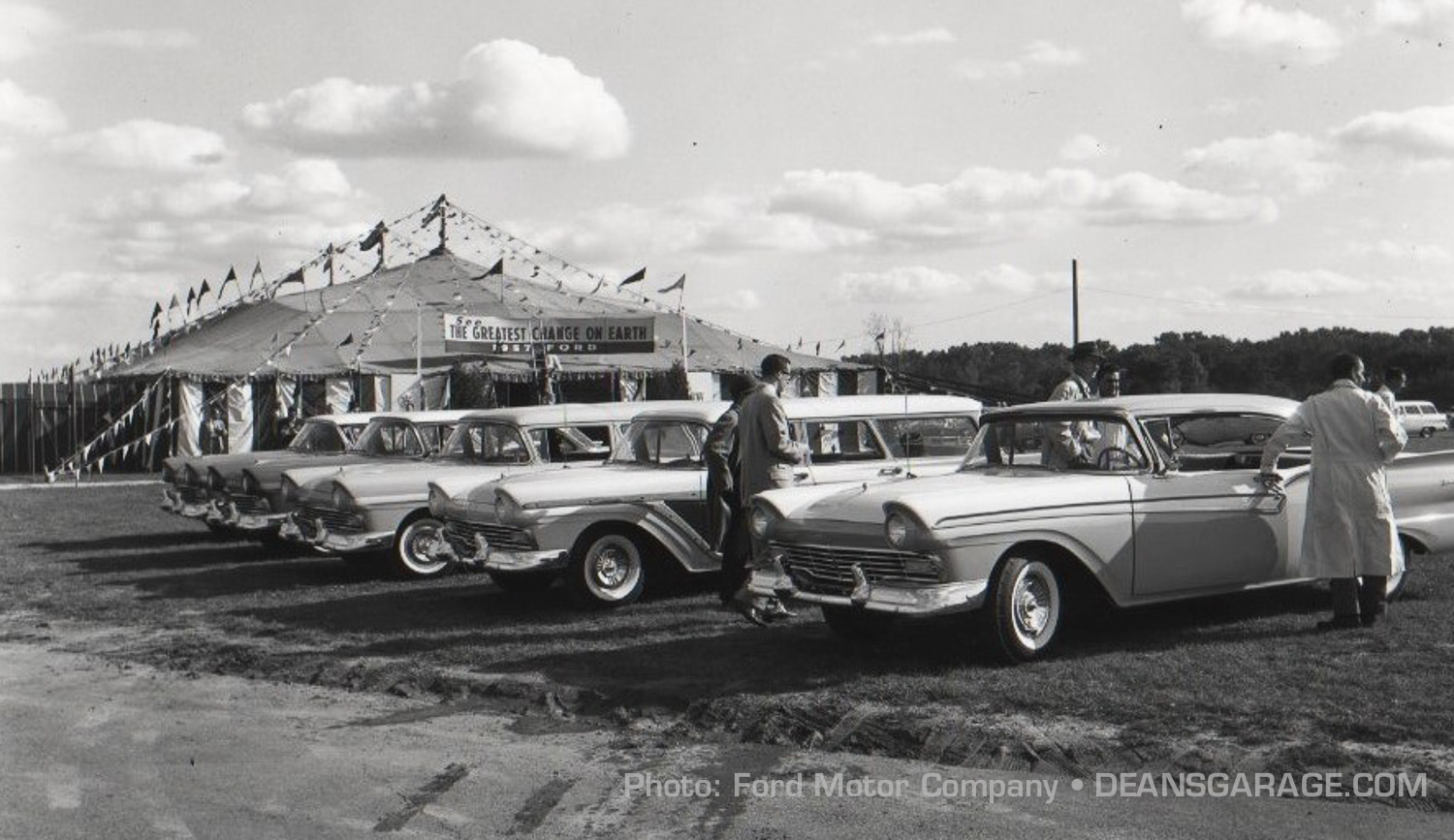
Members of the press were invited to test drive the new Fords, including in the foreground this Fairlane 500 Victoria. These would have been early production vehicles, and you can bet the guys in the garage went over them with a fine-tooth comb!
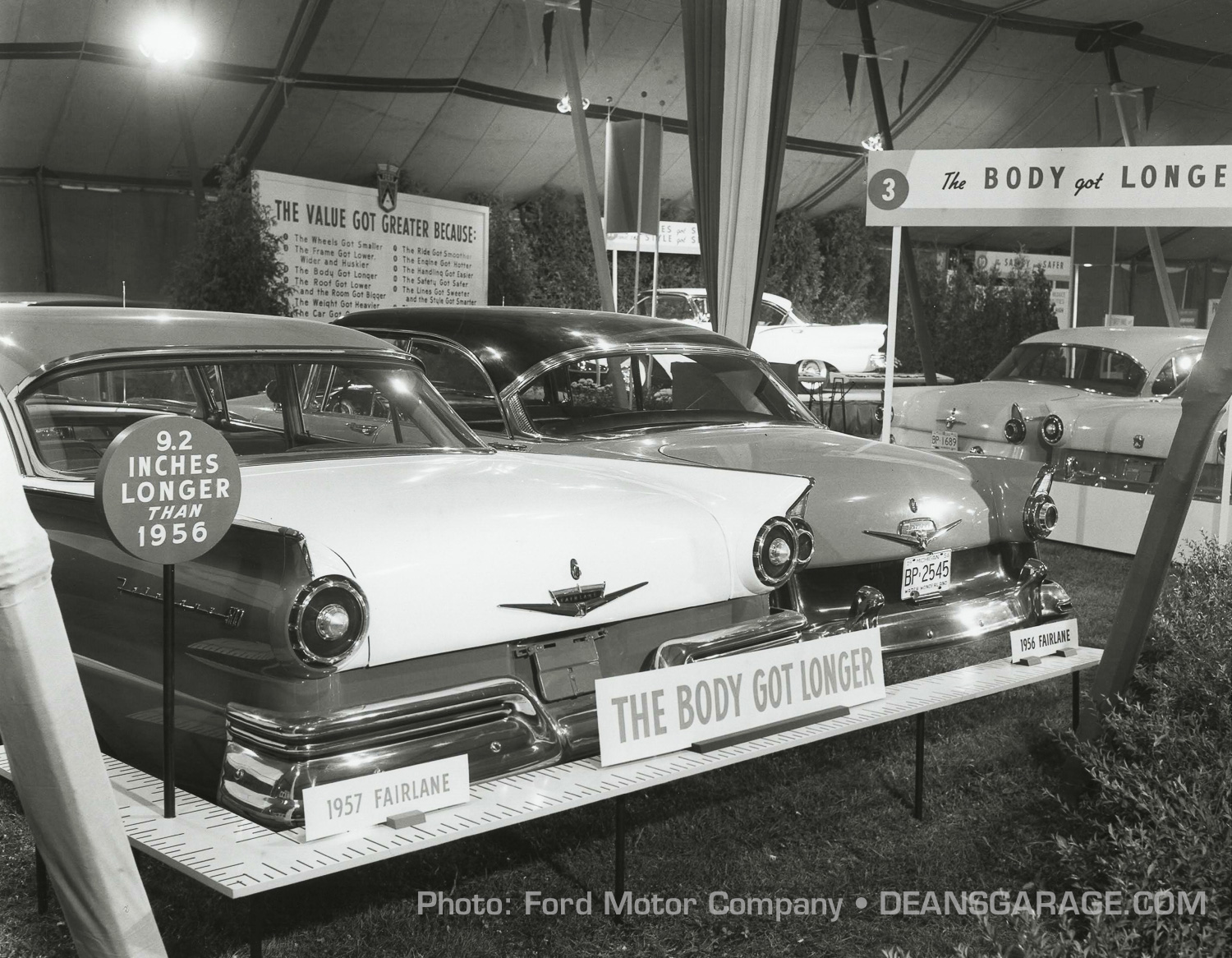
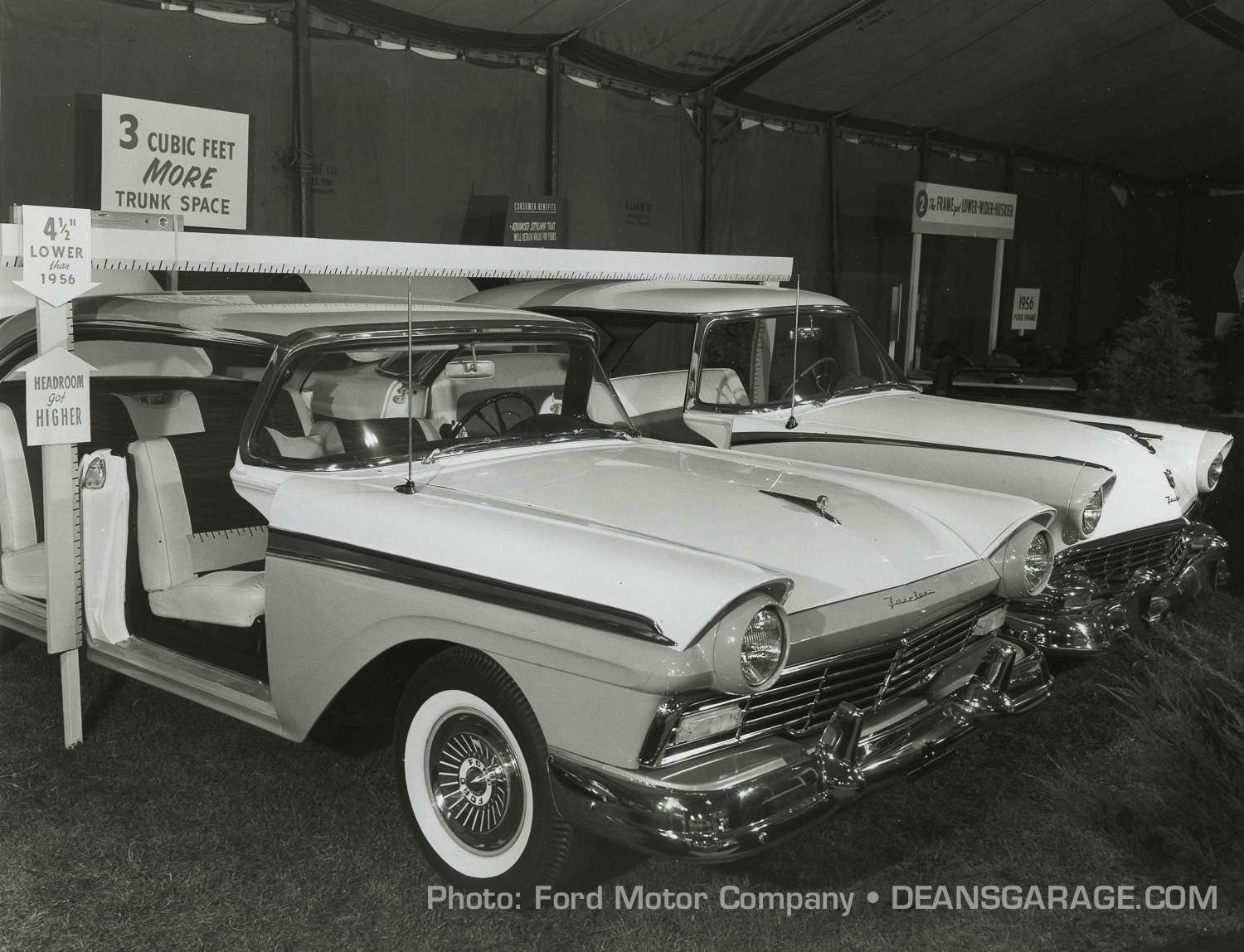
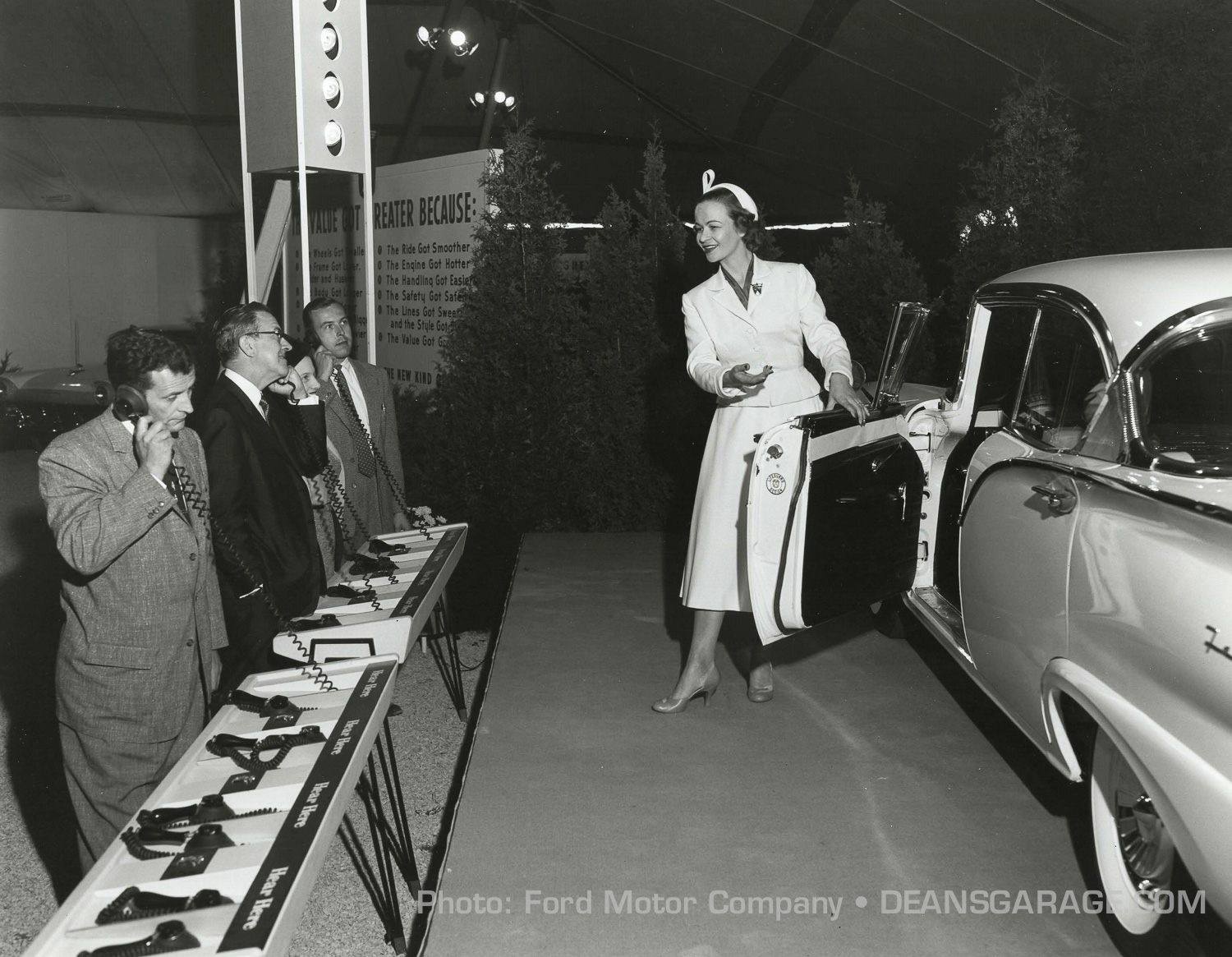
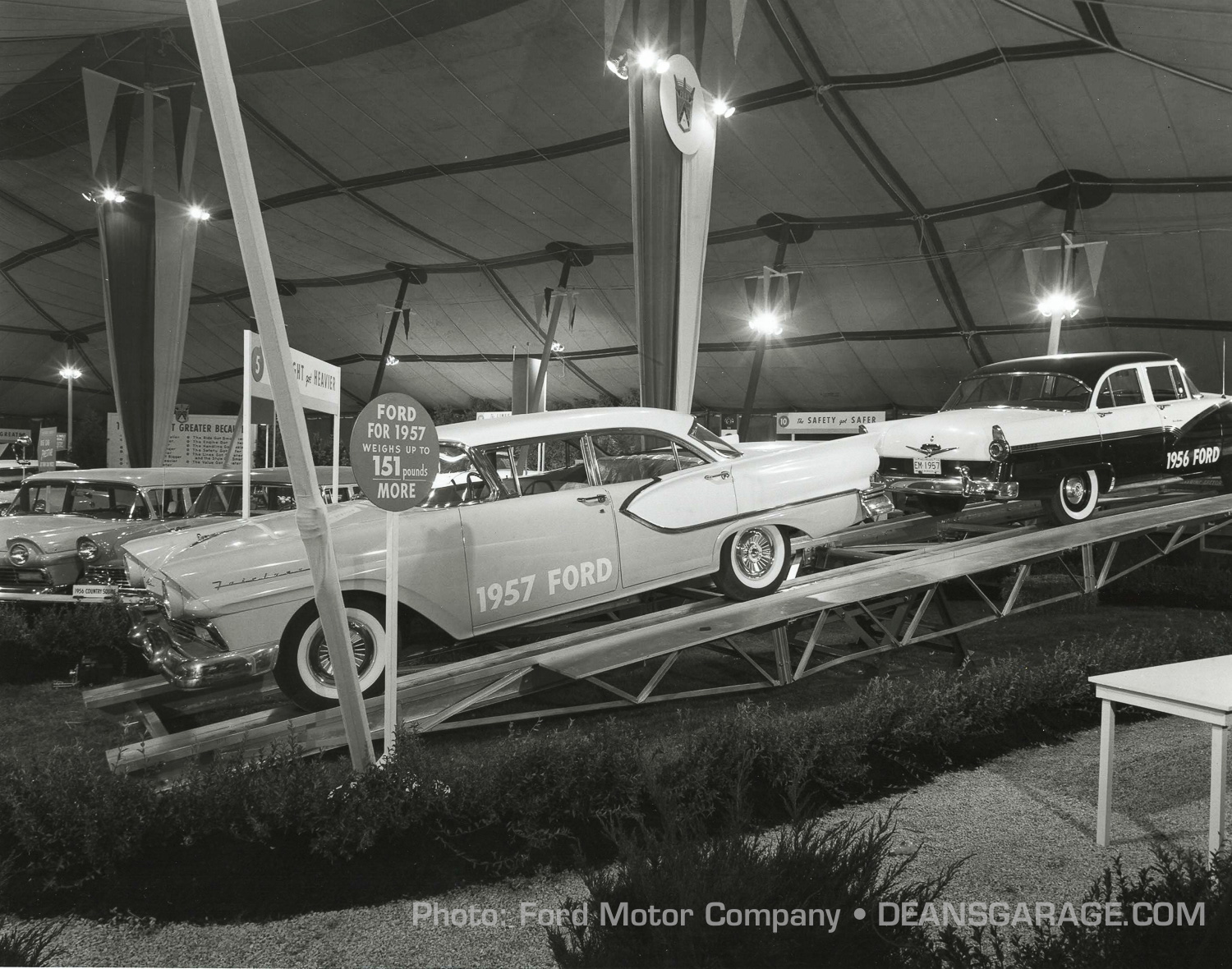
The preceding four pictures were all taken during the unveiling of the ’57 Fords to the press.
Inside the tent there were numerous displays like these showing just how much lower, longer, wider, heavier and roomier the ’57 Ford was over its 1956 predecessor. In my mind 1957 was one of those Ford moments that really changed the course of automotive design and packaging much like the ’49 Ford, ’83 Thunderbird and ’86 Taurus did. My dad was so impressed that he bought a new ’57 Sunliner and why I bought one in 1977 with 36K miles that I still have today.
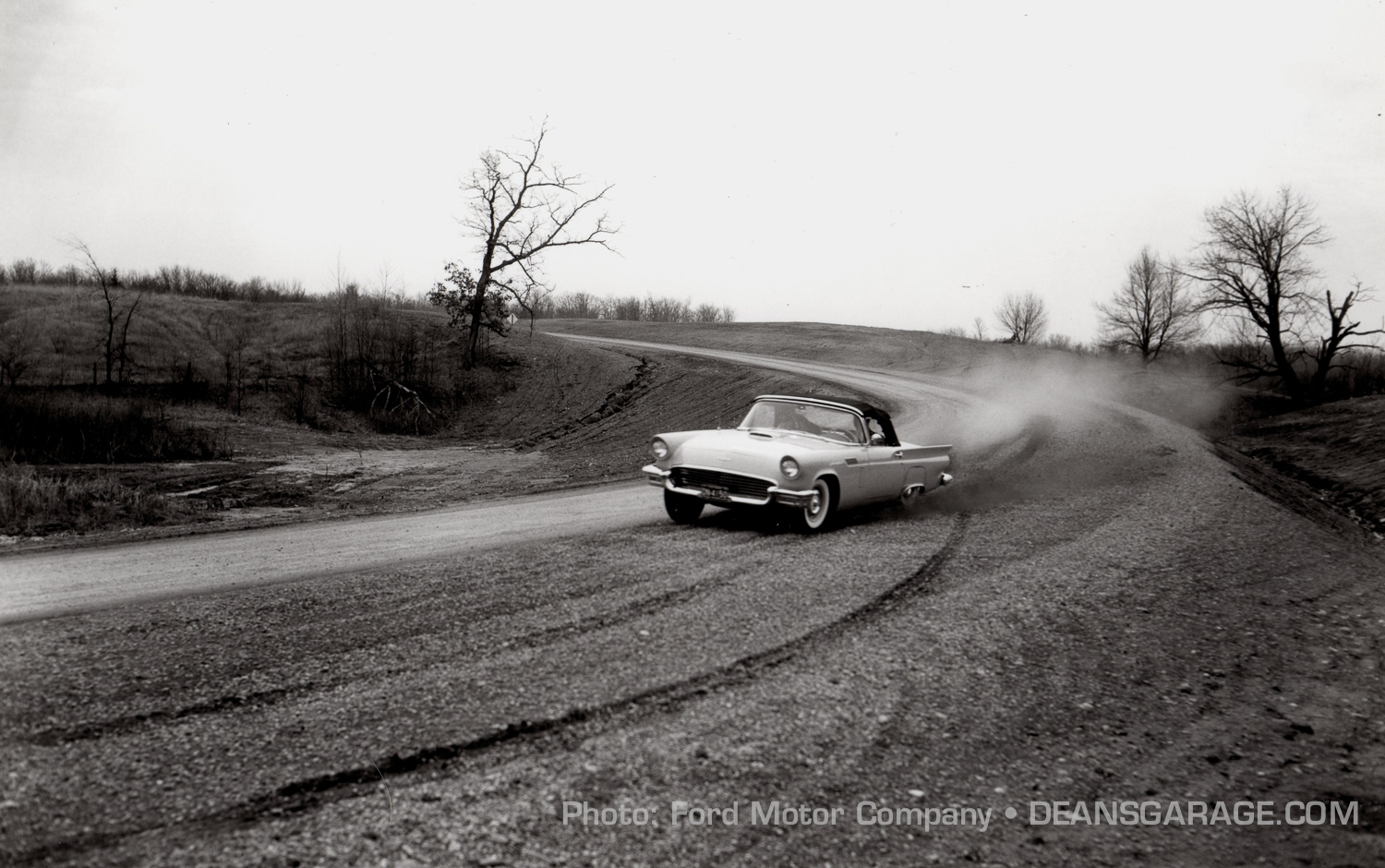
Now, can you imagine treating your mint condition ’57 Thunderbird like this today? This This picture was taken on April 3, 1957 on the rough gravel durability road.
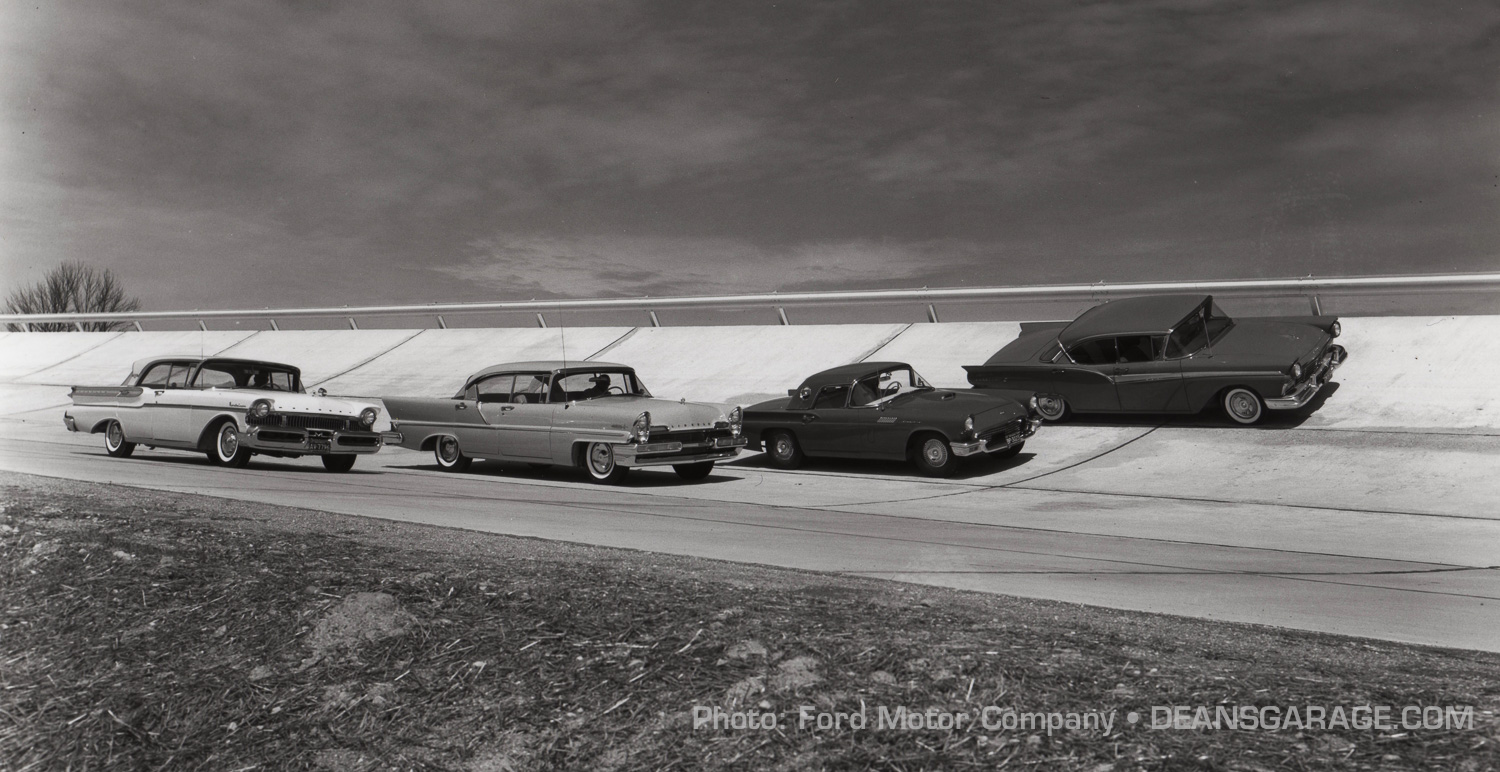
Situated at the beginnings of the high banking on the high-speed test track is the nearly full Ford Motor Company lineup for 1957. This was also taken on April 3rd. The top of the elevated part of the banking is a full eleven feet above ground level. Rare to see a ’57 Thunderbird without either fender shields or white walls, unless a rare supercharged “F” Code.

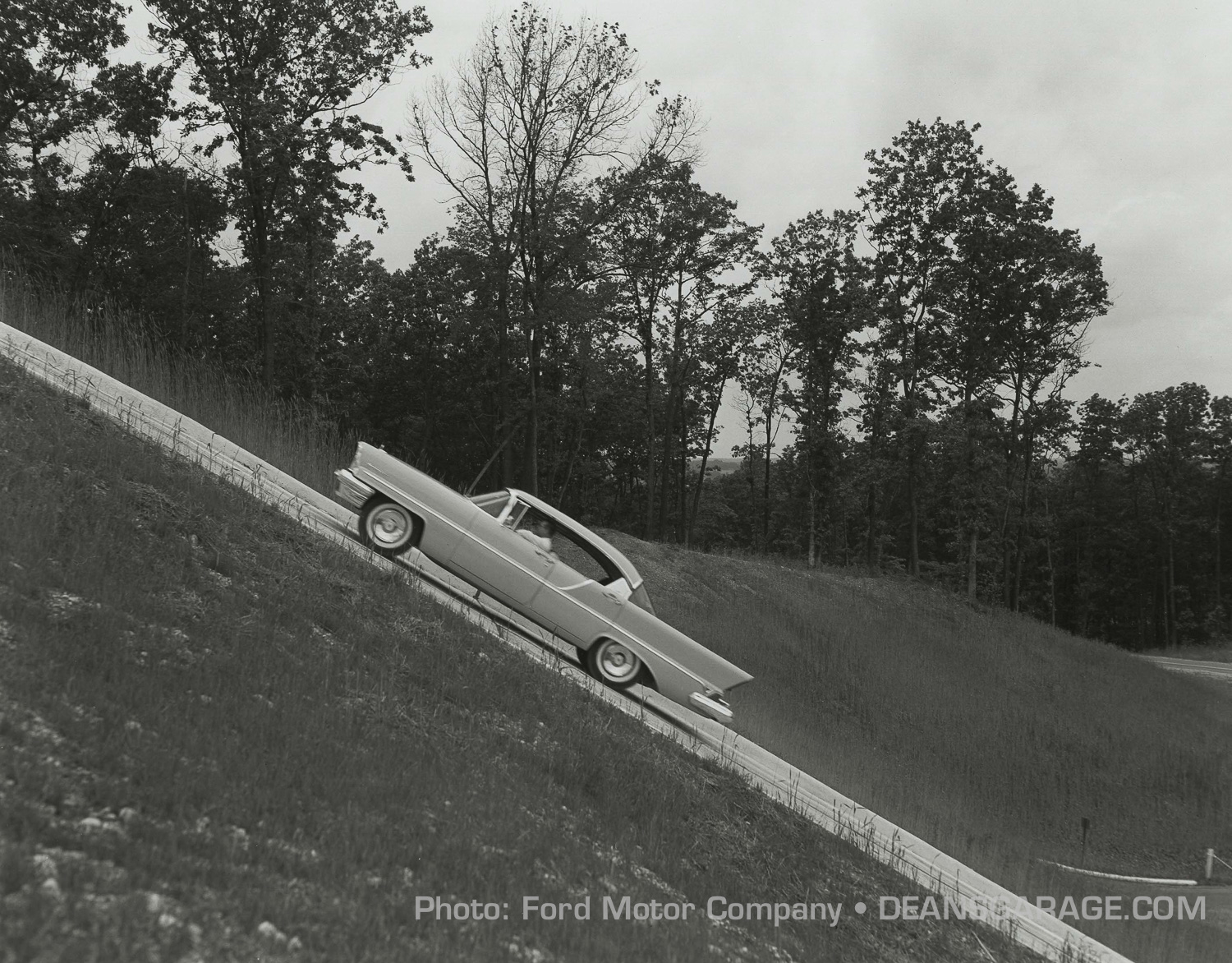
With the high-speed track in the background, we can see these two climbing a 45-degree grade. There are three steep hills with as much as a 60-degree slope. Steeper than any hill in San Francisco! You can also see just how rural the setting was back then. Today it is rather surrounded by estate homes and a golf course.
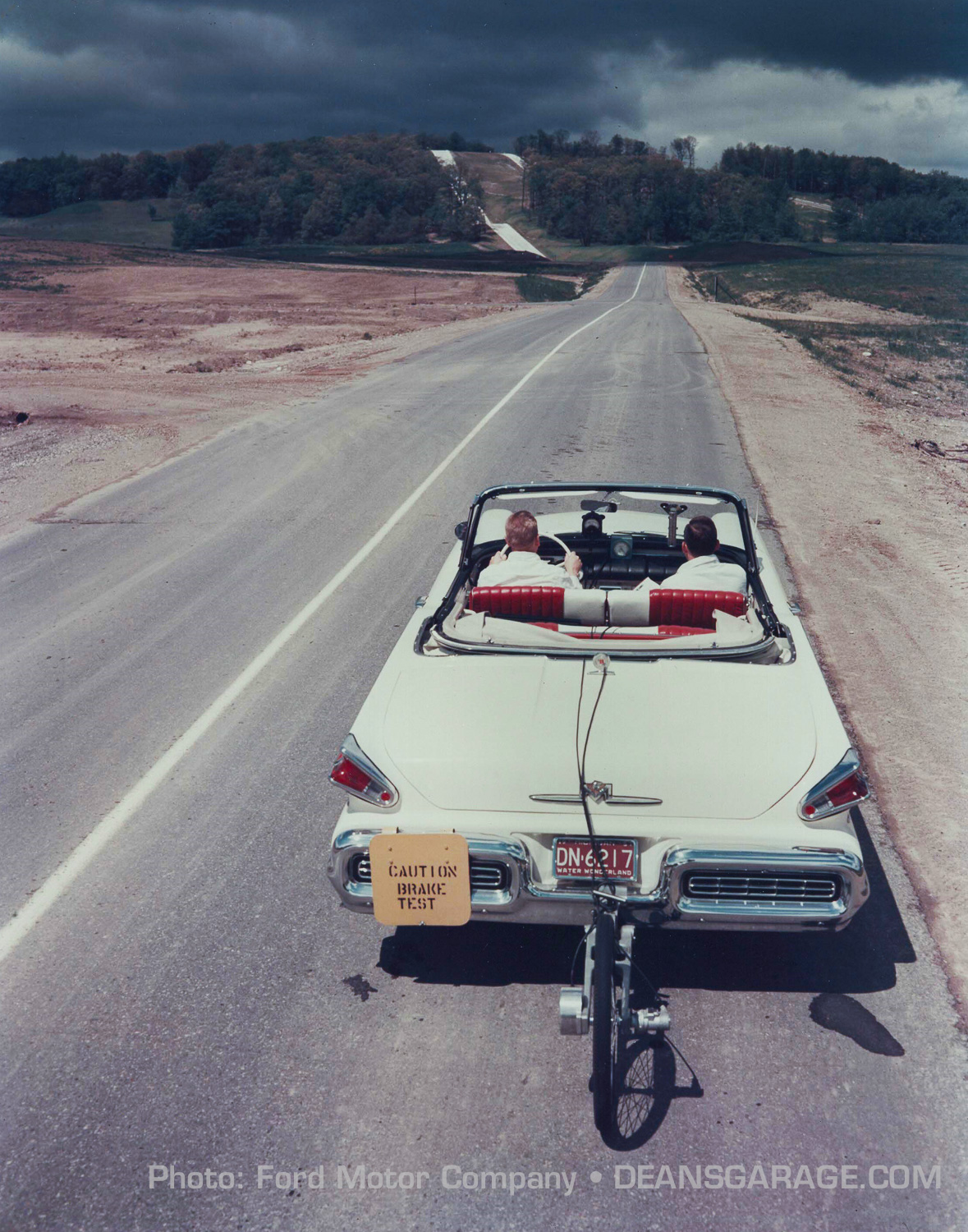
A ’57 Mercury is conducting a brake test. You can see some of the steep grades in the background. Testing of this type was naturally 100% analog and purely mechanical back then.
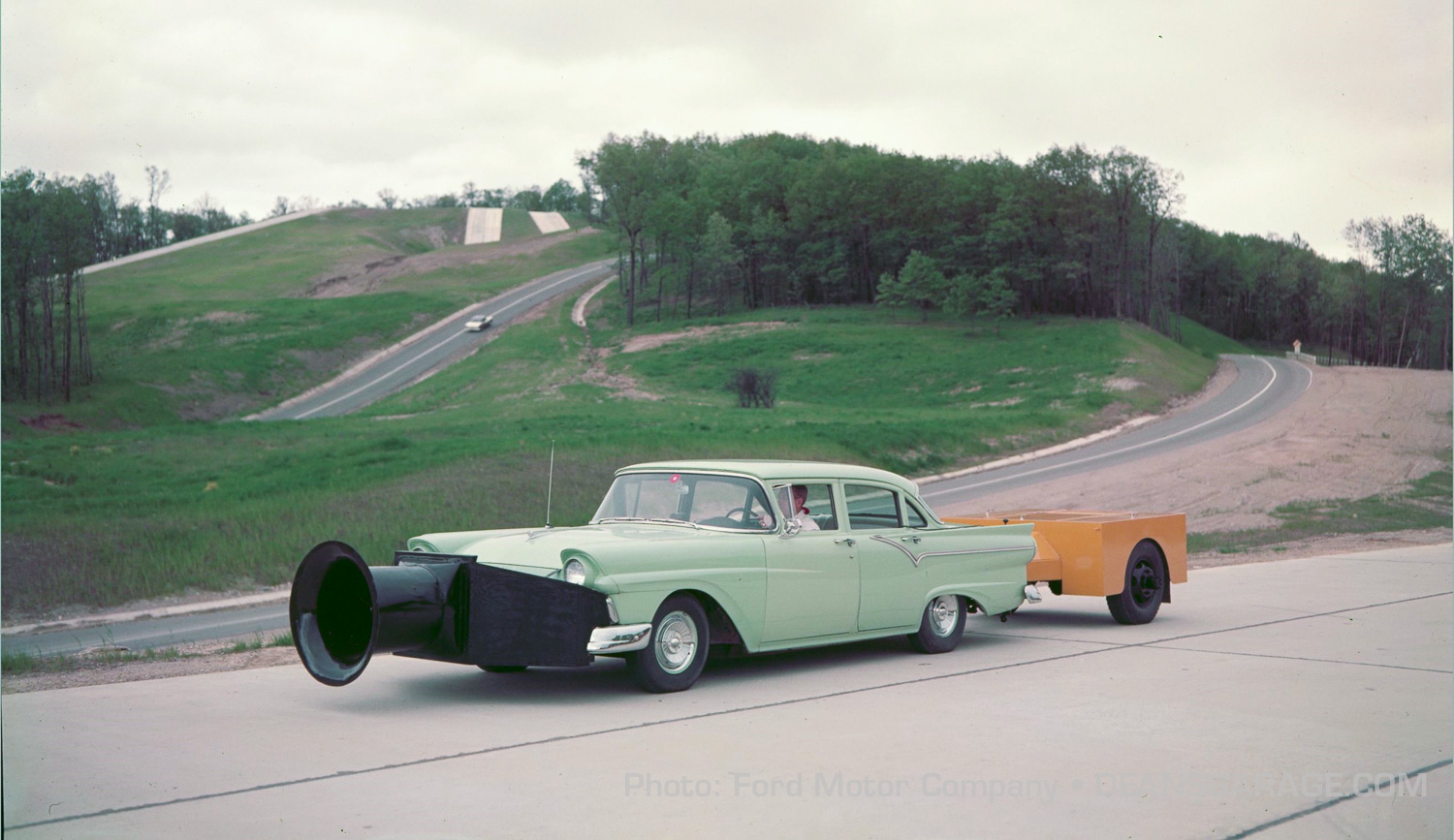
Quite the apparatus on this ’57 Ford Custom. I suspect that they were testing cooling capabilities while pulling a load. Note how the paint on the driver’s door does not quite match the rest of the car.
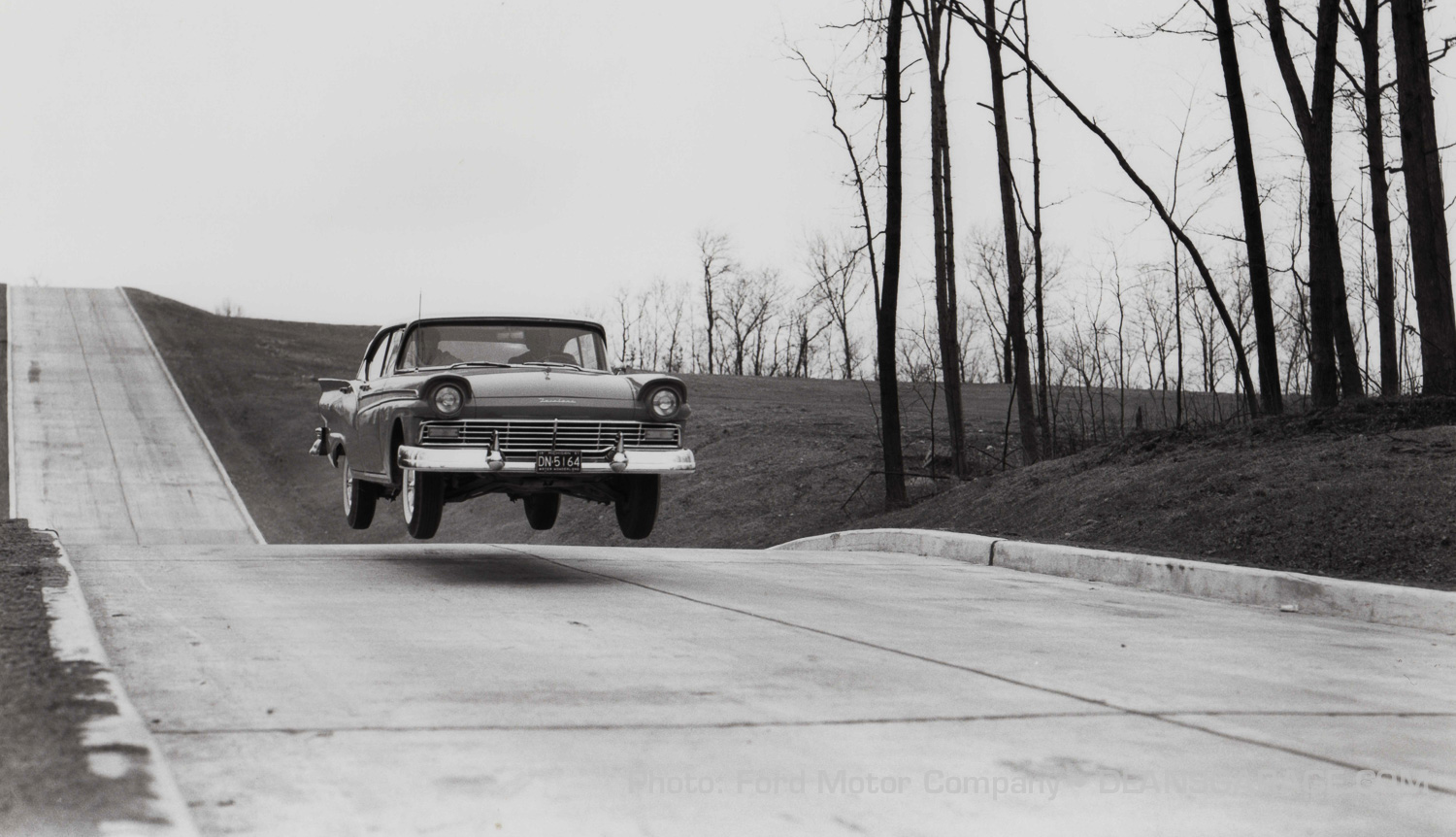
While test driving must be quite boring at times, especially when doing long term durability testing, one must think it could be fun from time to time. Here we have a ’57 Fairlane 500 with all four wheels off the ground! Today, according to Ford, quite a bit of the testing done at Romeo is autonomous and without a driver!
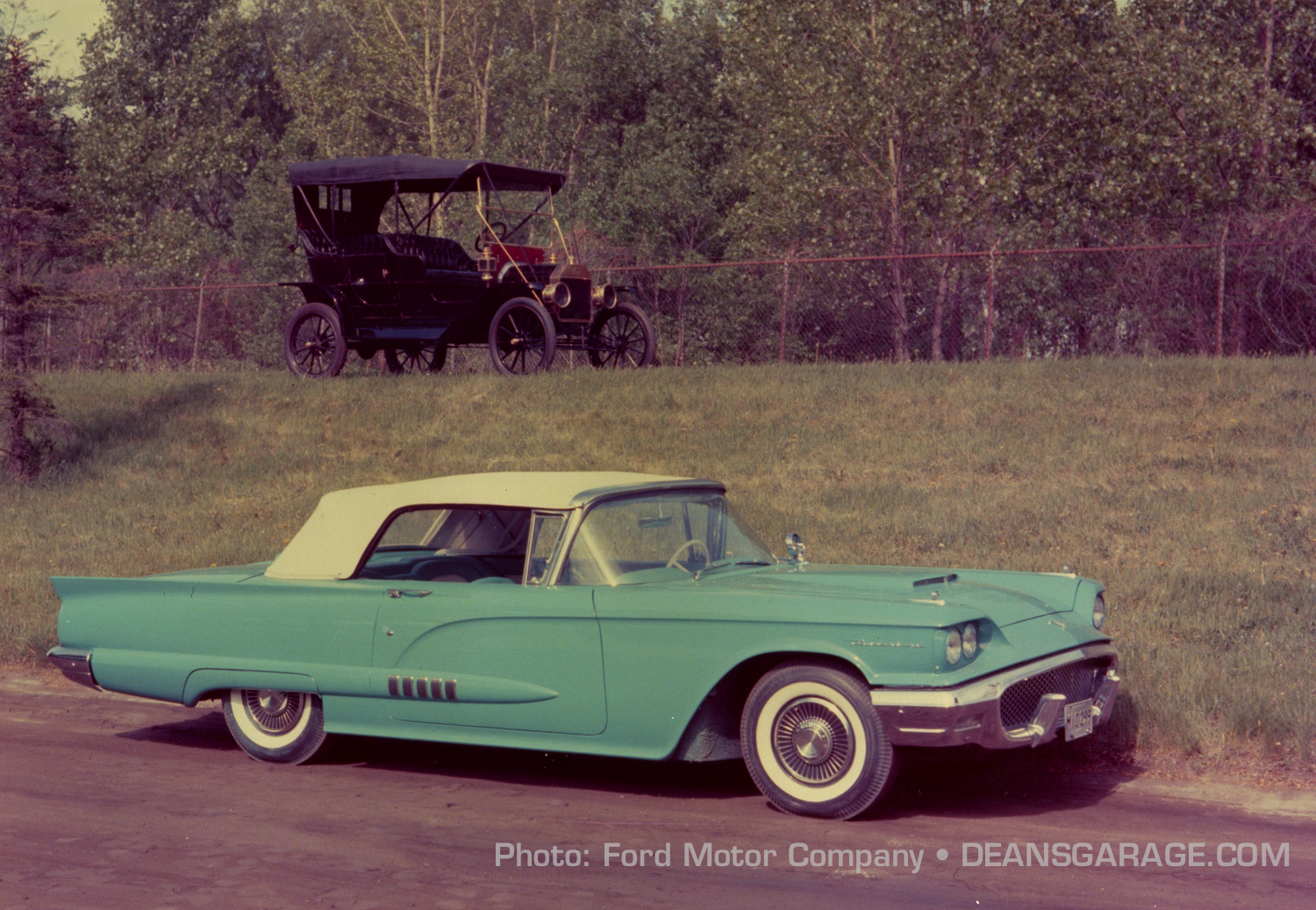
Romeo, due to its privacy, was also used from time to time for publicity shots like with this ’58 Thunderbird convertible and a 1909 Model T. If you go to Romeo today one of the first items you will notice is the 10’ and 12’ high chain link fence that surrounds the entire property. While Ford says it is that high due to the need to keep deer away, I’m sure it also helps to keep prying eyes out. Before the high fence was constructed apparently some test drivers were injured after hitting a deer at high speed. Makes sense to keep them out considering how wooded the area is.
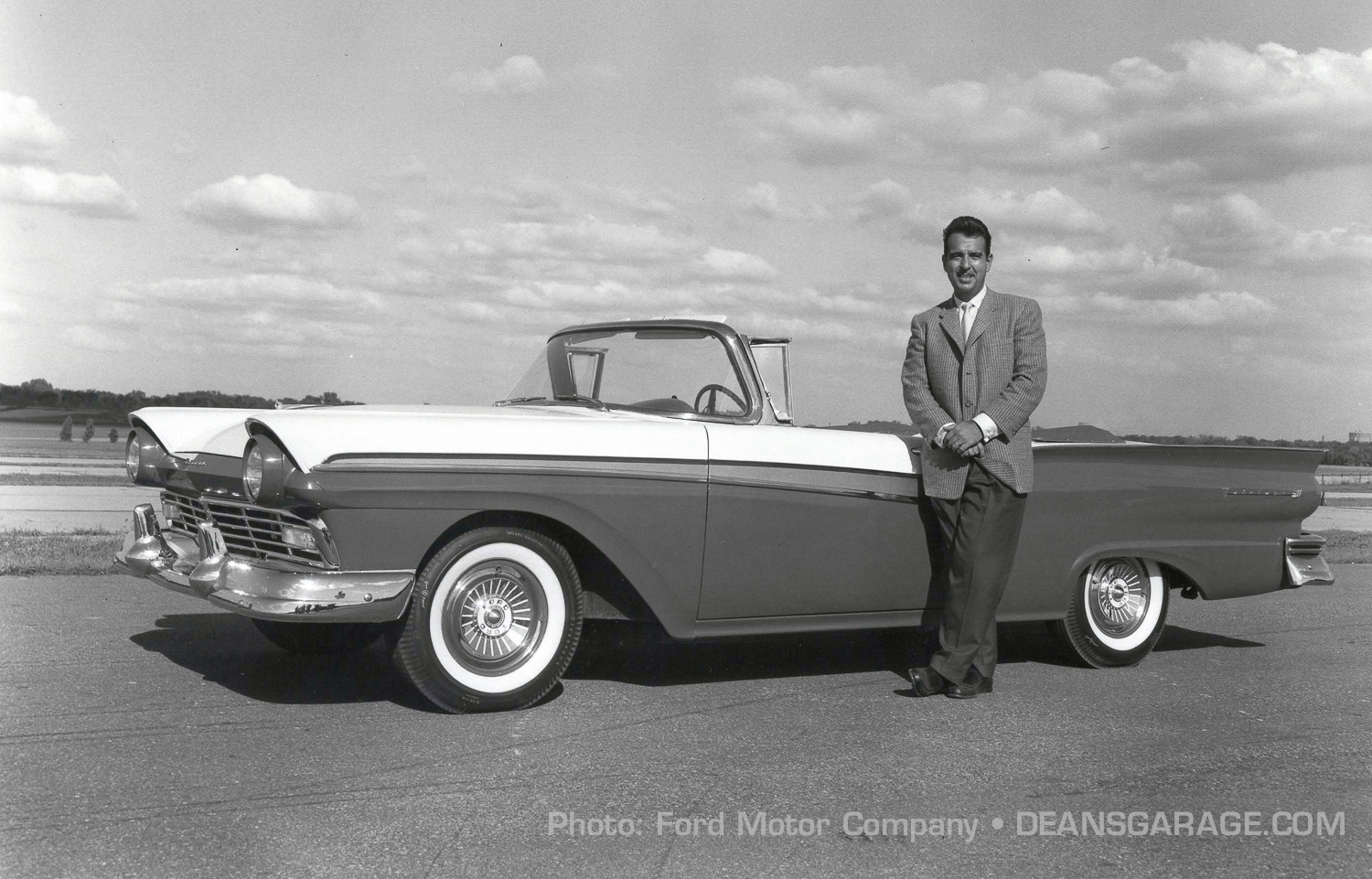
Celebrities such as singer, radio and TV host Tennessee Ernie Ford occasionally visited Romeo. Tennessee Ernie Ford was a long-time spokesperson for the Ford Motor Company. And Ford Motor Company sponsored many of Tennessee Ernie Ford’s television programs such as the 1956-1961 run of “The Ford Show.” Nothing like a double entendre to help sell some cars!
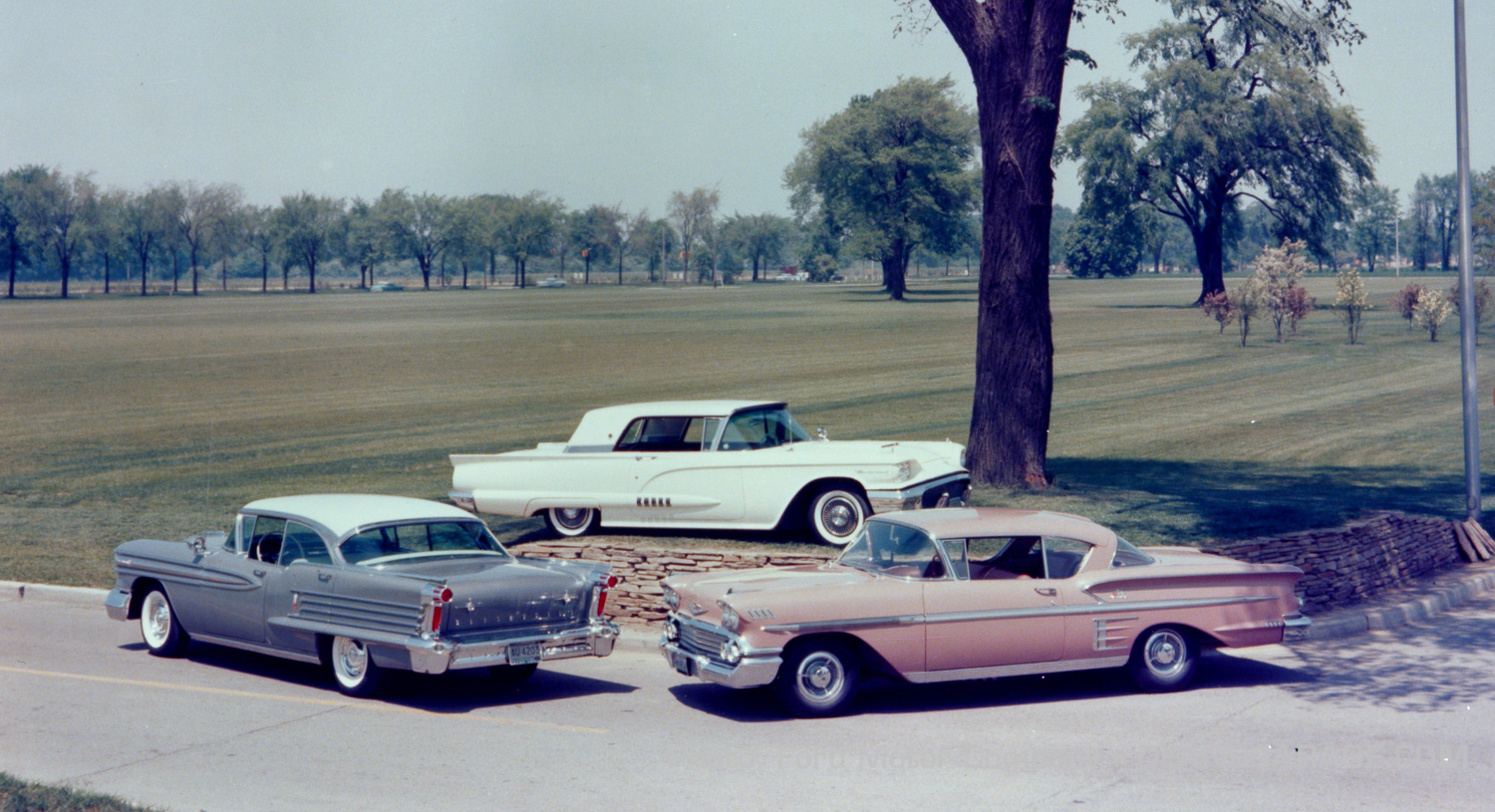
Ford also used all the test tracks to evaluate other manufacturer’s cars. This Colonial White ’58 Thunderbird appears with a ’58 Impala and ’58 Olds Super 88. What with a recession starting in the fall of 1957, the 1958 Model Year was a real bust for the auto industry. Of all brands and marques only the Thunderbird saw a sales increase over 1957.
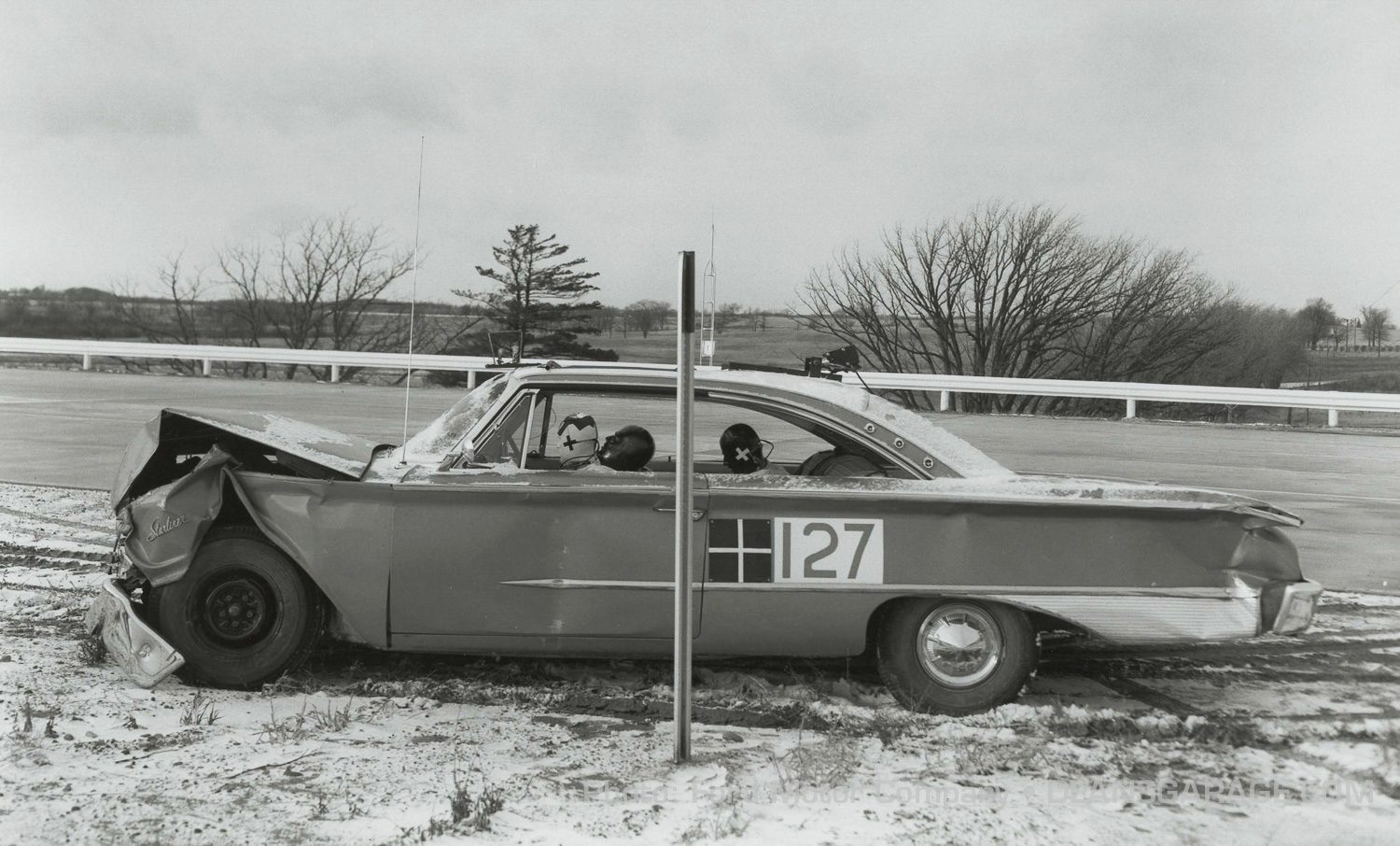
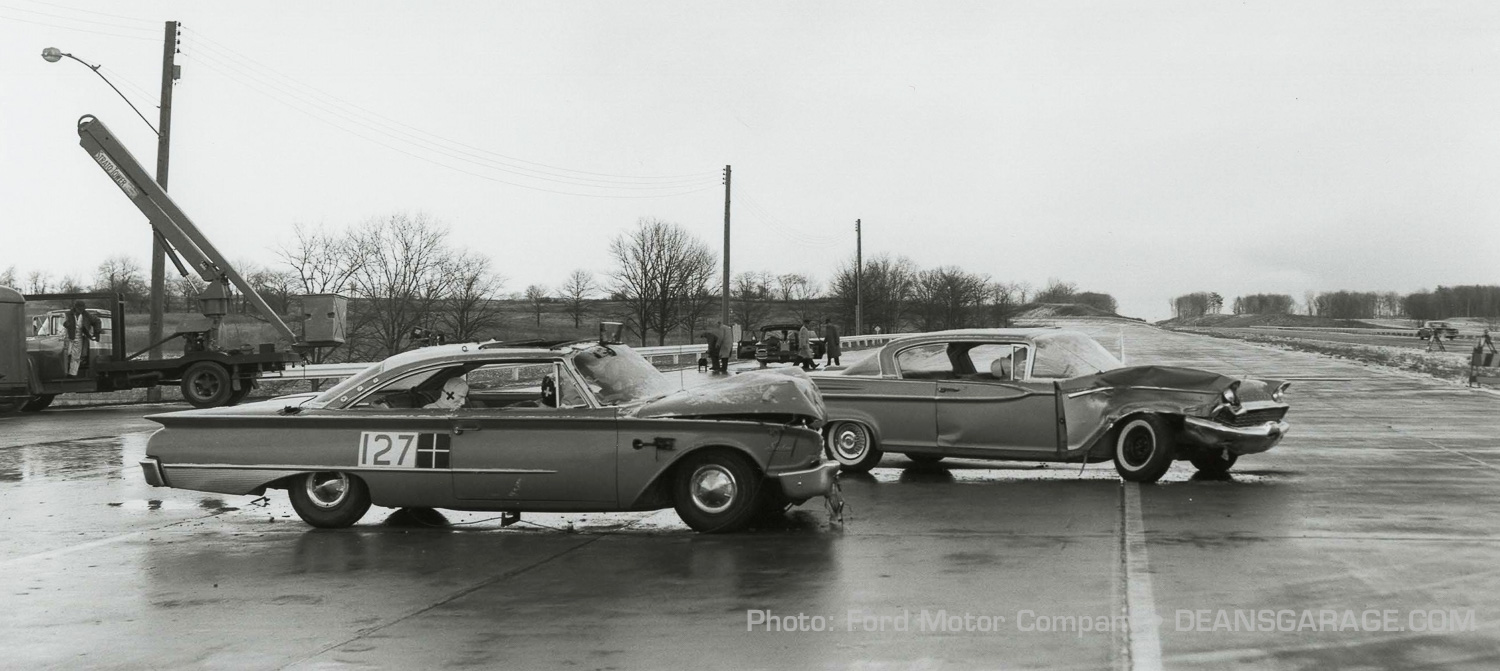
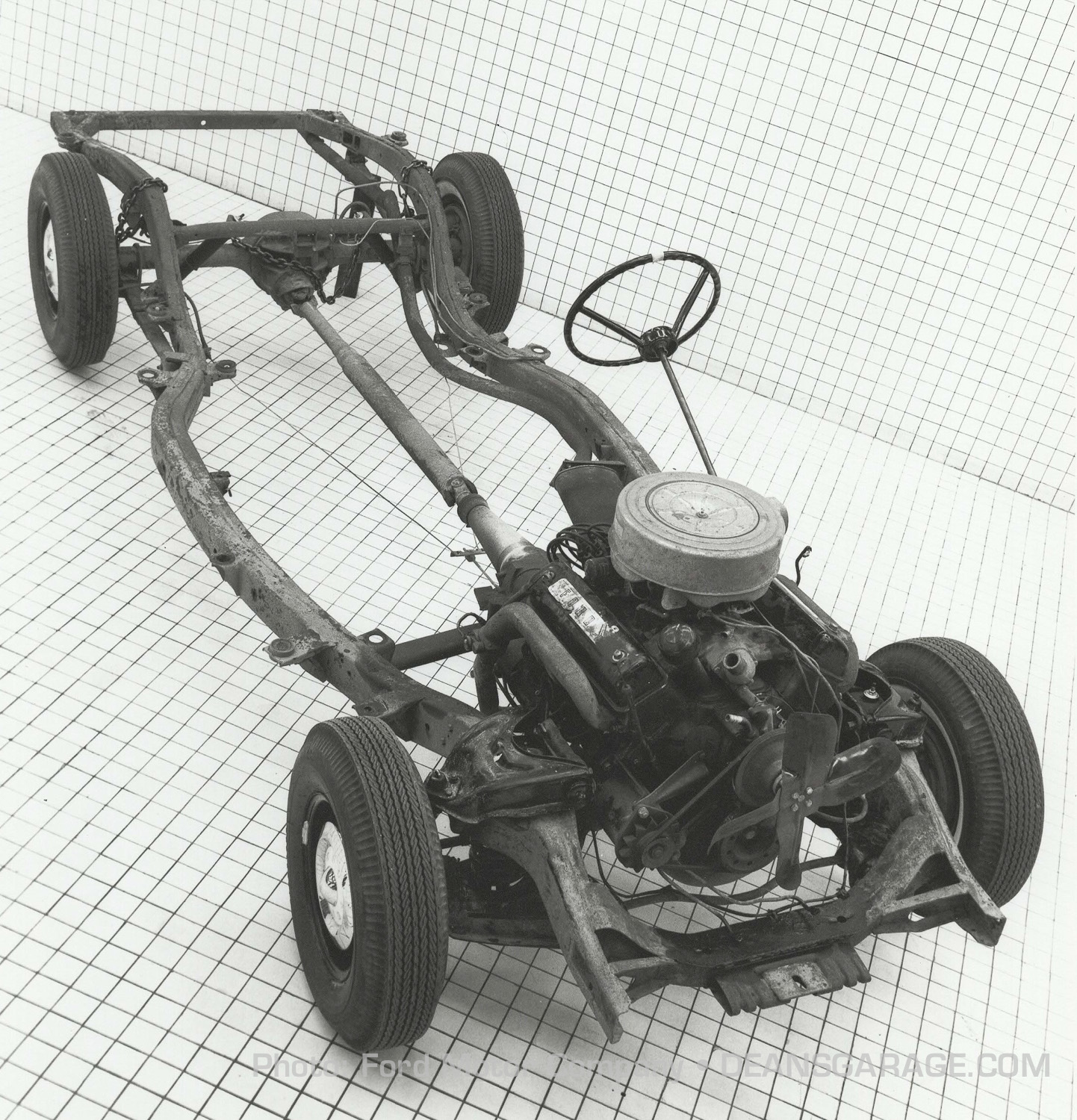
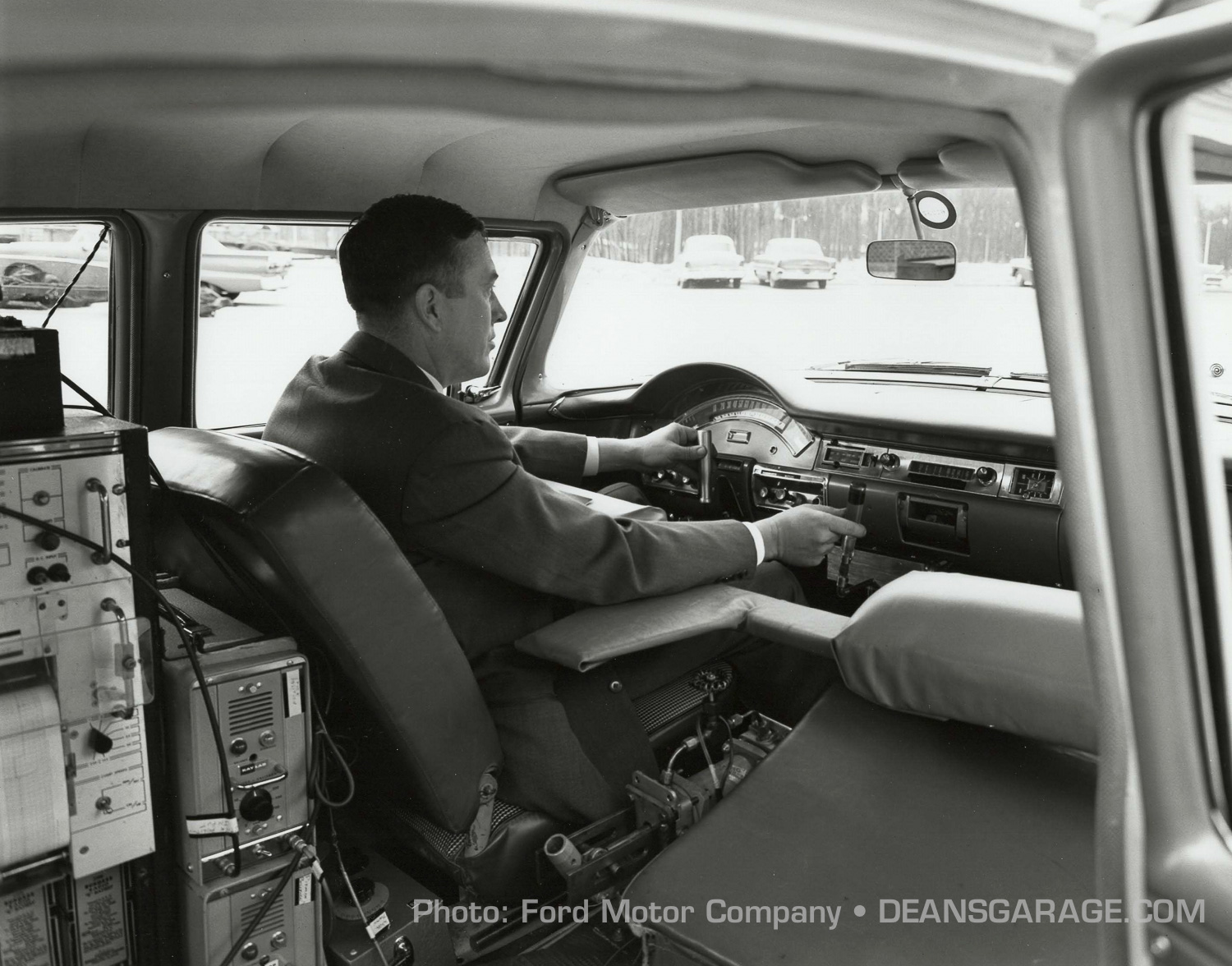
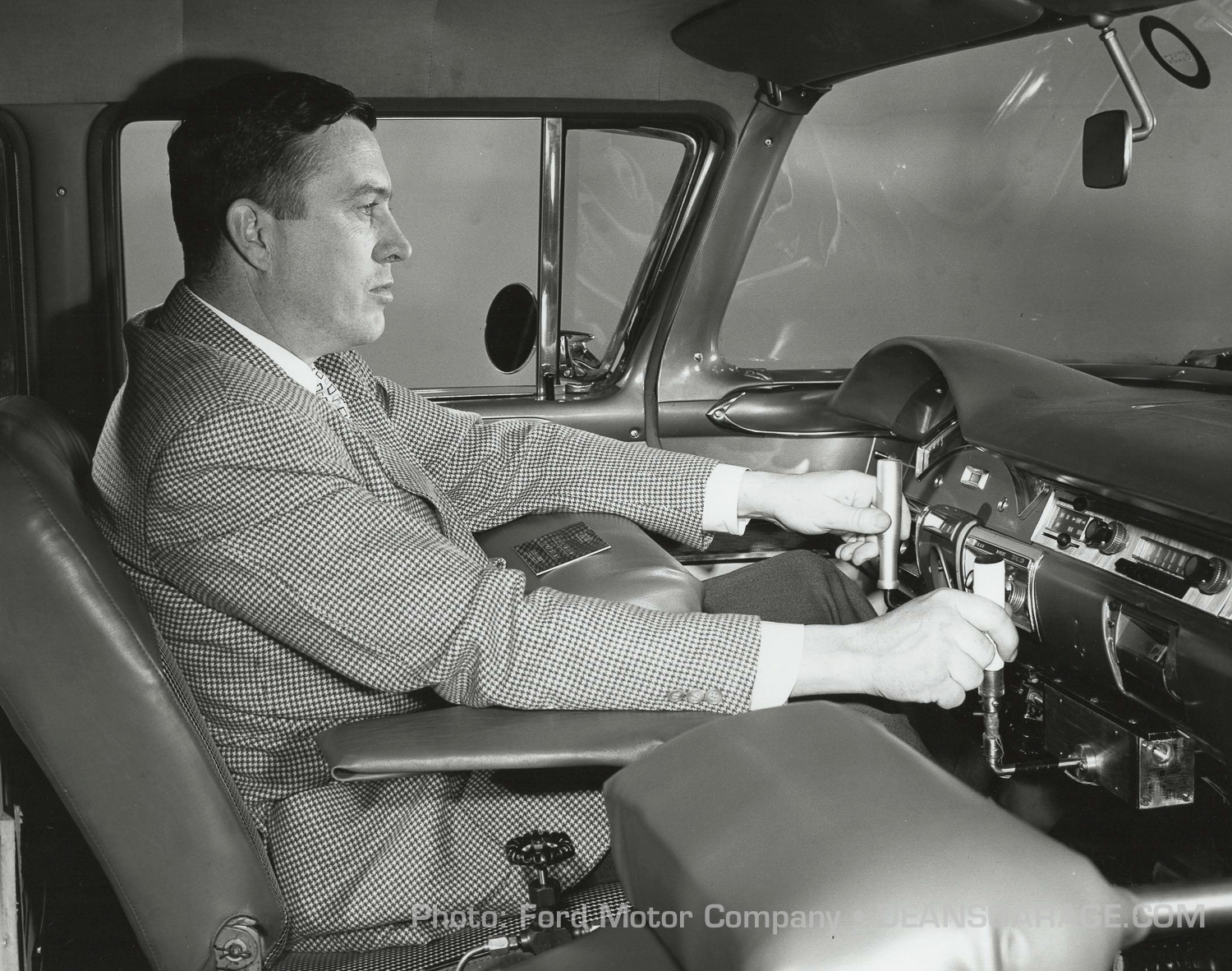
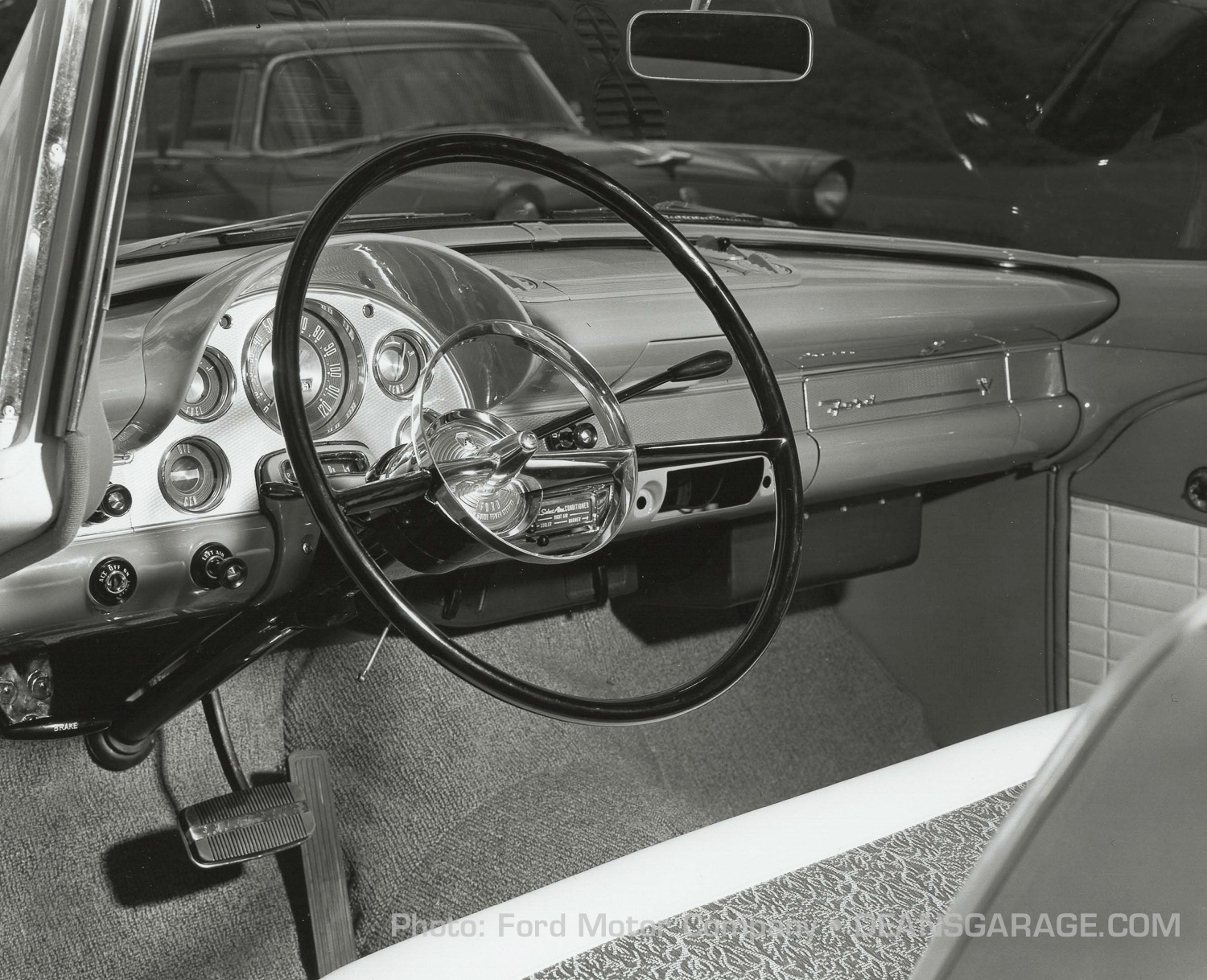
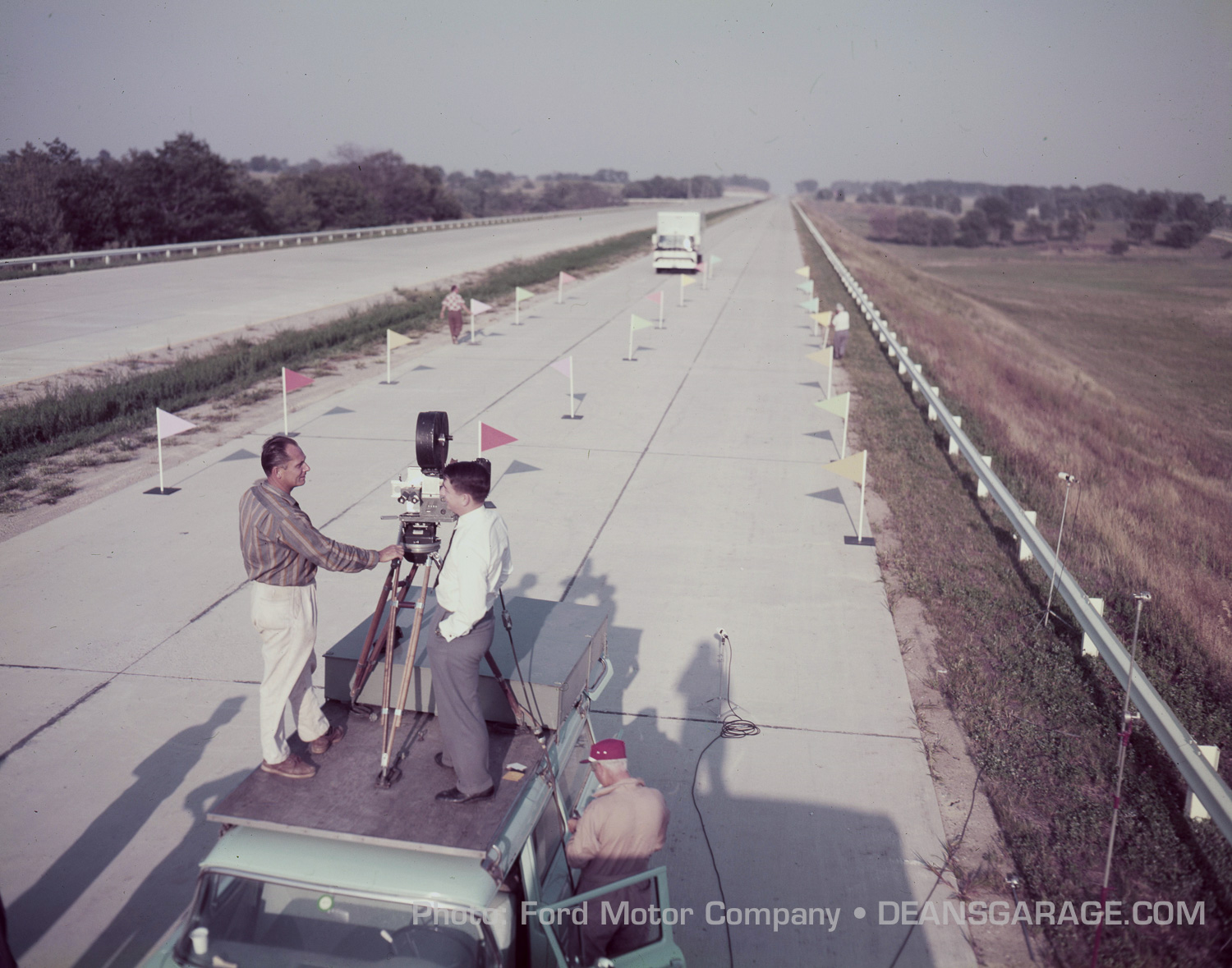
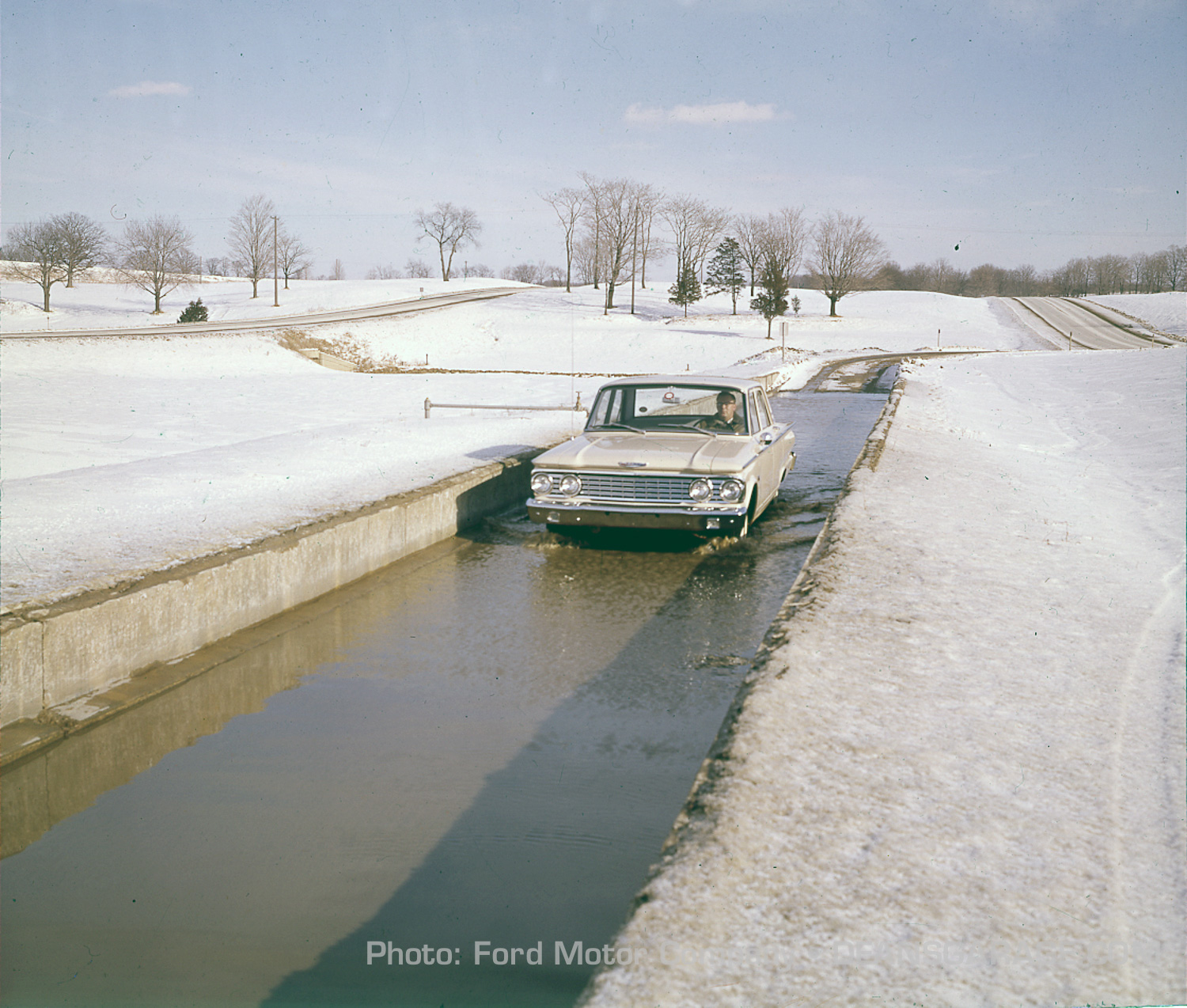
The above eight pictures depict the diversity of testing that occurred early on at Romeo. Ford was very active in crash testing its vehicles. This test in 1959 between a ’60 Galaxie Starliner and ’59 Mercury.
Many cars endured long term reliability and dependability testing. Miles were accumulated as quickly as possible, some running as many as 24 hours a day, to detect engineering and reliability issues. Once the determined number of miles had been accumulated the car was completely disassembled and wear evaluated.
New ideas were also evaluated such as this novel joystick steering experiment. Note the extensive test gear behind the driver’s seat. I would imagine with all those electron tubes the car was rather warm inside.
This 1956 Ford steering wheel hub is rather interesting with a very small horn ring and sharp center bullet. Just about the opposite of what Ford eventually developed with a deep-dish steering wheel to keep the hub further from the driver’s chest. All part of the ’56 Ford Lifeguard Design safety campaign.
Lastly, testing occurred seven days a week and in all seasons. This ’62 Fairlane may be driving through a salty water bath.
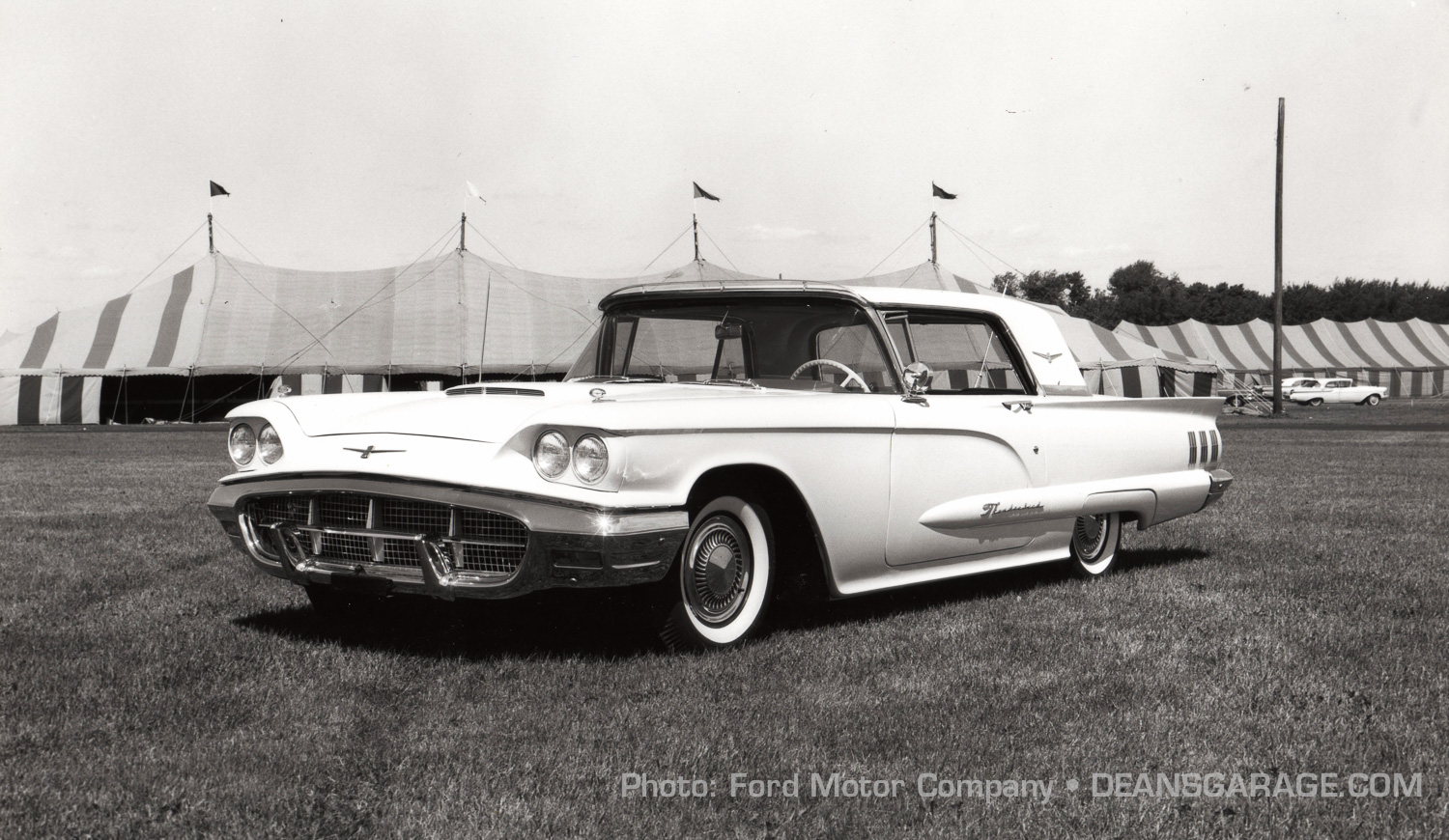
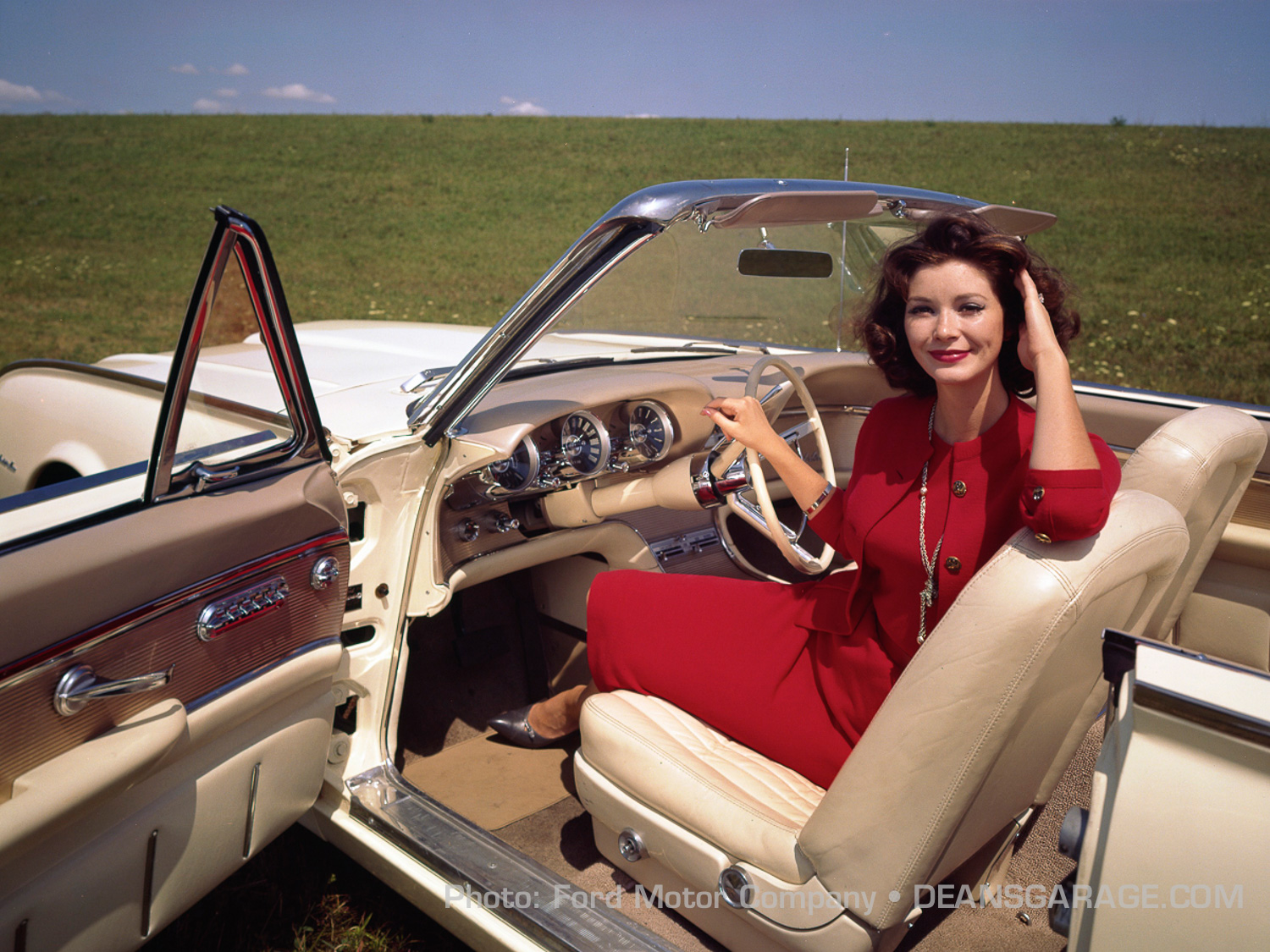
Because of Romeo’s immense size, remoteness and being completely out of view from the public it was a great place to introduce dealers, key shareholders and press to the “Ford Family of Fine Cars” well before their introduction dates. This ’60 Thunderbird appeared at the dealer’s introduction meeting in late summer 1959.
It was also a great place for photographing new models for advertising and brochure creation purposes. This lady is highlighting the new Swing-Away steering wheel on this 1961 Thunderbird.
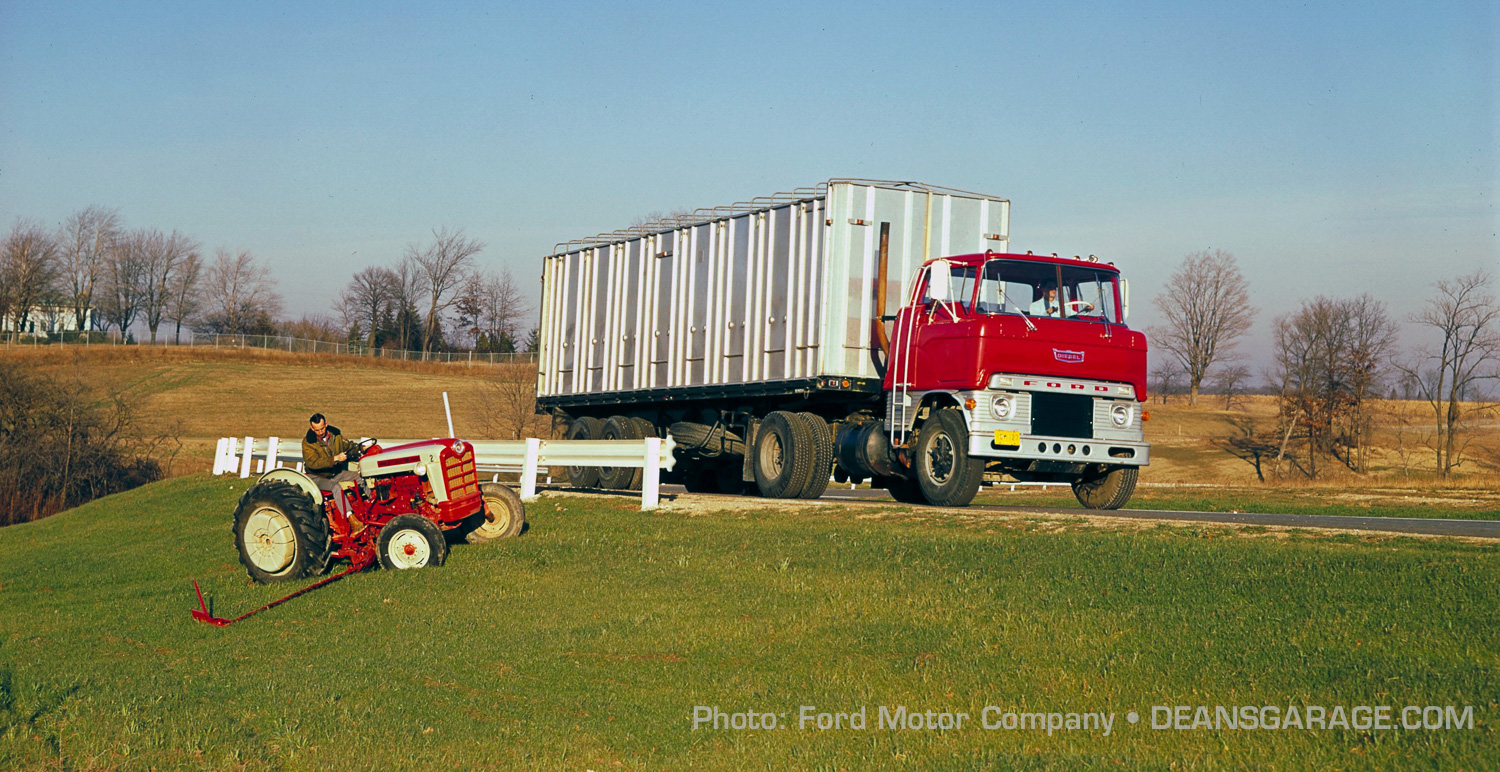
As you can see in many of these photos, the grounds were well maintained employing, of course, several Ford tractors. This was taken in the spring of 1960. Trucks and tractors were also extensively tested at Romeo.
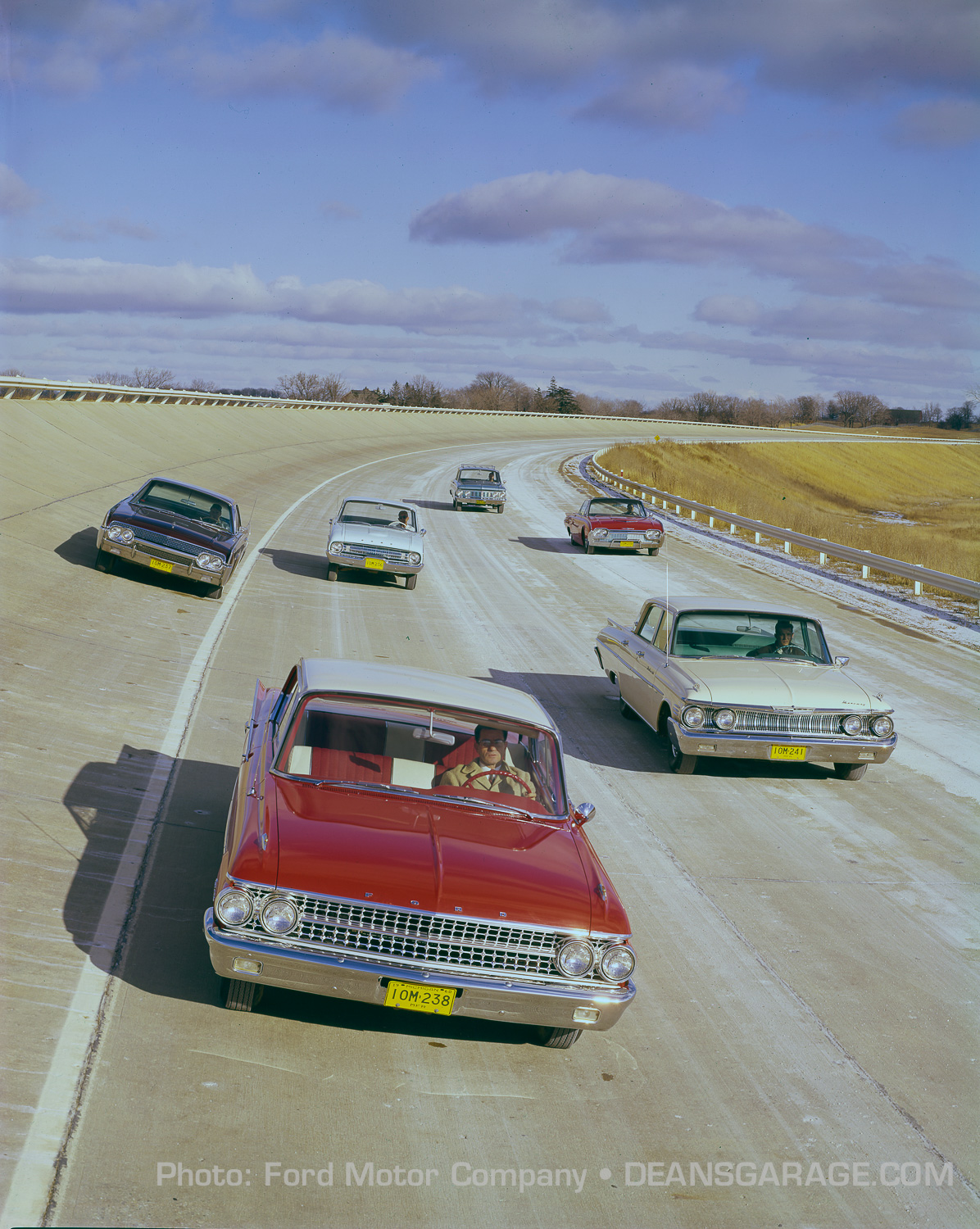
Here’s a lovely shot of all the 1961 Ford products, with a ’61 Galaxie Town Victoria in the lead. The fellow driving the Thunderbird with the top down is a brave soul as this was shot in January of 1961. Perhaps a true Michigander! Note that all of the cars have Michigan Manufacturers license plates.
Over the years the Michigan Proving Ground has been improved and restored with all new surfaces. In 2008 the five mile long 9” thick concrete on the high-speed test was crushed, ground up and recycled on site. All 130,000 tons of it which was later used as a base and underlayment for the new track rather than be sent to a landfill. The facility remains in constant use to this day, some 69 years later.

I have only been receiving your publication for a few months, but even though I am a General Motors retiree, my love for the automobile makes me love them all. I look forward to your emails and often pass them on to my friends.
I must say that I very much appreciate you putting in a Bible verse every time. I hope you do not stop that practice.
Very Interesting info and pictures. I live not far from the old GM proving grounds in Mesa AZ. I was always excited to see the prototypes running around.
Very cool and informative, just love those old cars.Thanks
This is a nice overview of the Romeo facility! I would suggest that the 1957 Chrysler “Forward Look” products, really set the industry on its heels. 1957 saw Ford outsell Chevies, but for some reason, Chevies are more revered today, possibly due to the small block engine. We just judged the 1949-1961 Popular Car class, at the Eyes On Design show, at the Ford Estate, in Grosse Pointe and a 1957 Skyliner retractable hardtop, took a well deserved, first in class.
I worked there for 32-1/2 years. Loved my job. Worked with a lot of great people. Enjoyed seeing about the beginning.
Elroy Betker
Hi Jim, I also worked at MPG for 32 years. Many, many great people.
Has changed a lot, chassis dynos ,new fuel stations. New ROUGH roads.
Really miss it.
I use to fly my amphibious ultralight to Lakeville Lake and passed the Romeo proving grounds test track. There were a couple of covered car ports (about 1/4 mile long) that any car on the track would duck into when someone would see my airplane. I only took a couple of pictures. Nothing worth sharing. Good memories.
I just ran across your website and images from the Ford Proving Grounds in Romeo. For me and our family, we have so many memories of my grand parents “life on the grounds.” My grandfather, James Hough was the facility manager for many years, 1955 to 1969. My grandfather and family lived in last remaining Fischer home, located across the road from the security gate.
There are so many memories and experiences. Grandpa designed and built much of the road maintenance equipment and plow vehicles for the high bank tract, designed the semi-truck crash barrier and high speed cameras pits, rumble strips and track expansions, text garage expansions and updates, etc. When my mother was in high school, they had parties at the house and would toboggan down the incline hill. My mom and dad were married at the proving grounds in the Fischer house.
My dad and uncles were all test drivers at one point or another. When my brother, sister and I were in elementary school, we stayed over many nights at the house, where cars ran on the test track 24/7, headlights flashing all night and the hum of tires all hours of the day. We rode in prototype cars on the high speed track and on the incline, went fishing on Fischer Lake, picked apples from the orchard in front of the main office/test garage, went to the yearly car shows and employee family events. We have some pictures and a painting of my grandfather driving a Ford Lotus on the incline that was presented to him at his retirement party that you might enjoy seeing.
Like I said, there are so many experiences and memories that I cannot cover in this space. Thanks for keeping this information from being lost. Please send me an e-mail address and I will prepare some photos to add to this link.